I have lived full-time in my van for three years and greatly underestimated how life-altering it would be.
When I began, I told everyone it would be for a year. I believed that at the time, but I now realize it was a safety net I’d created. An out. An exit strategy. It was a fear tactic I’d put in place in case I got on the road and decided it wasn’t for me — a way to exit gracefully without feeling like a failure.
It turns out I didn’t need an exit plan at all. Instead, I jumped head-first into a way of life that feels completely natural, and now I can’t imagine living any other way. Sure, there have been some not-so-great moments, but no way of living is easy sailing 100% of the time.
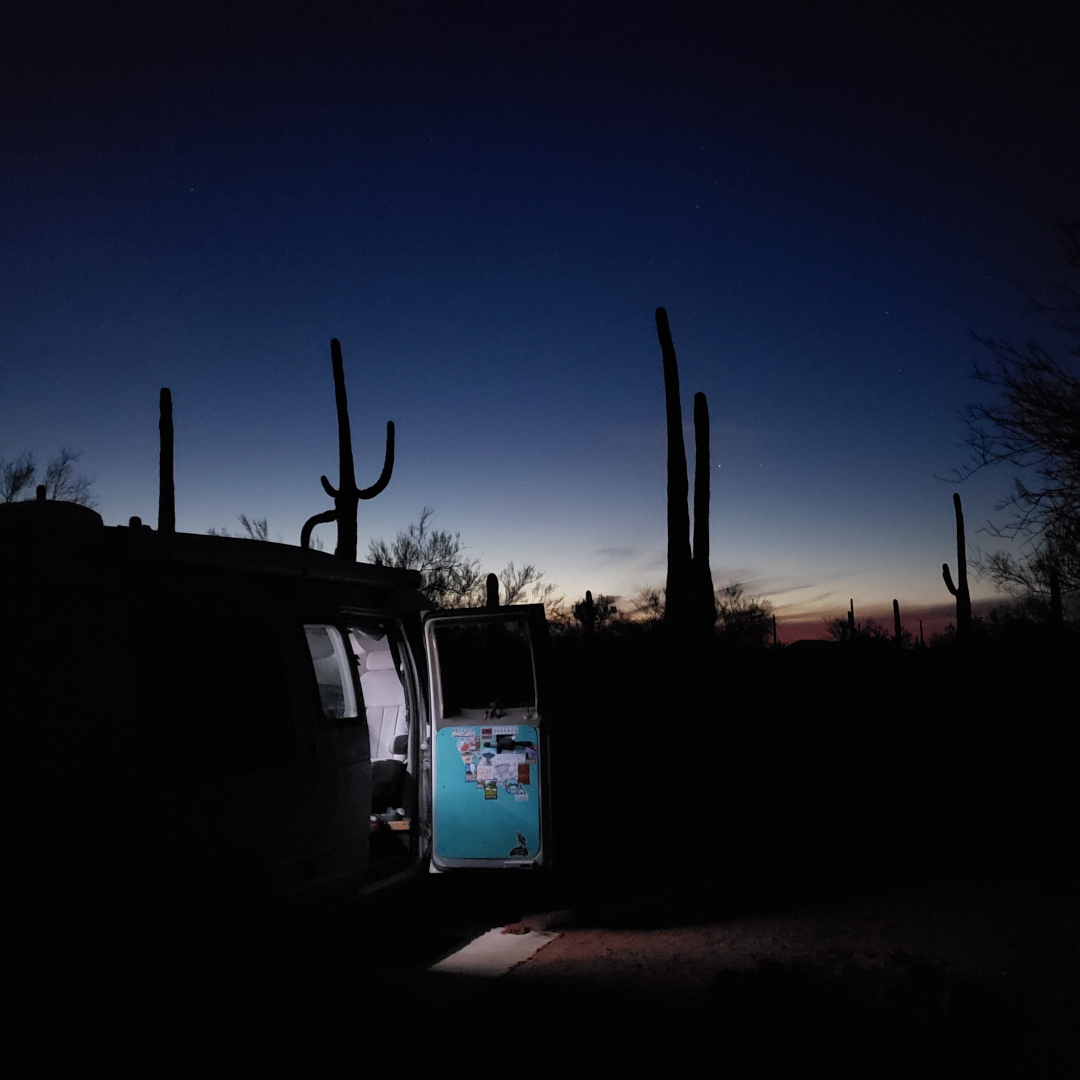
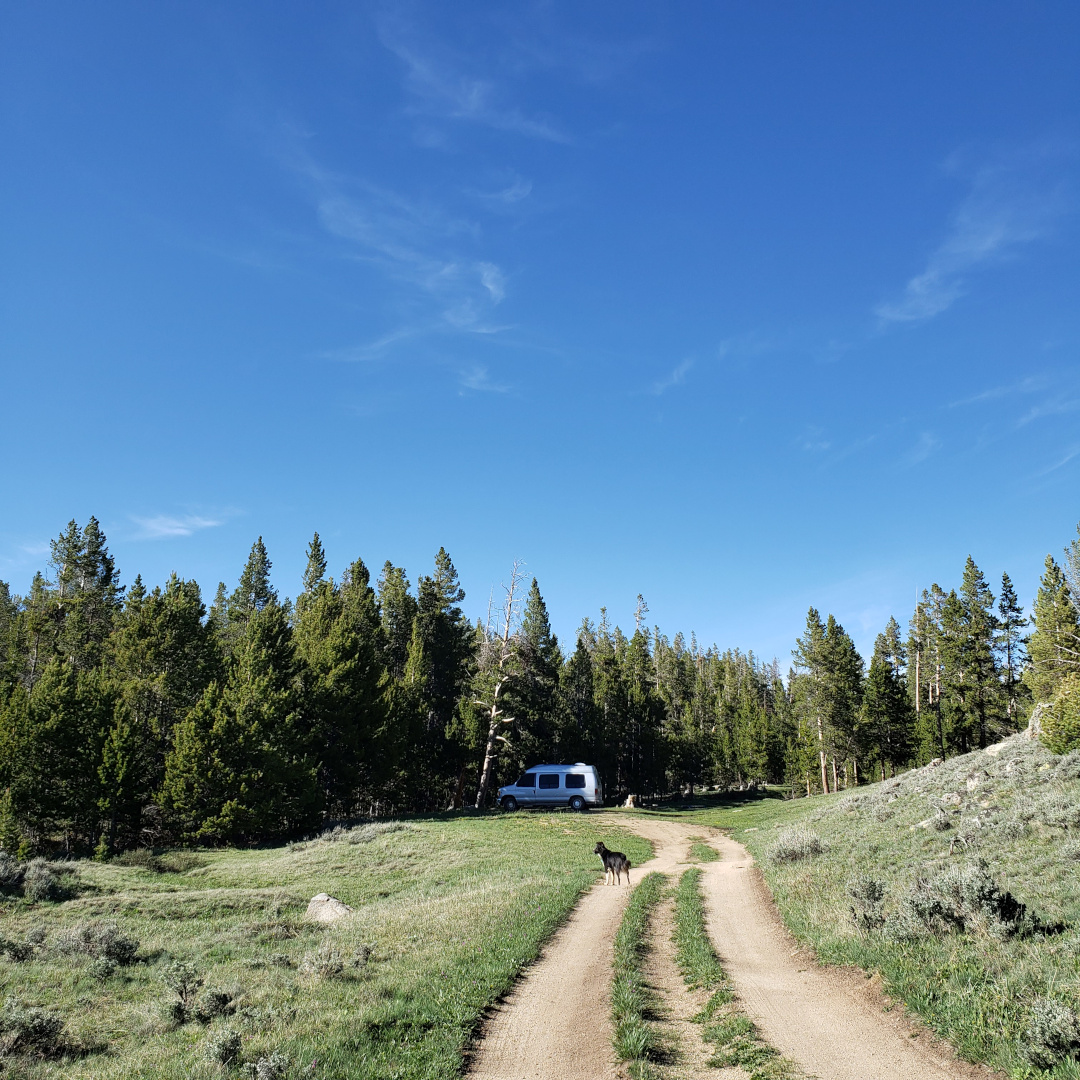
Shedding Skins
As cliché as it is, I have learned – and continue to learn – so much about myself and have grown exponentially in unexpected ways. Though I lived alone for years before this venture, van life stripped away distractions that kept me living life at surface level. Long drives, no phone signal, and meandering walks all provided the perfect opportunity to look inward – whether I wanted to or not.
I poked and prodded at storylines that played on a loop in my subconscious since childhood. Stories I’d attached to my identity and therefore always believed to be true until I began to look at and question them. I unearthed so many deep-seated fears, insecurities, and false beliefs along the way, it felt like I shed skins as I snaked across the American West. Shedding toughness, peeling layers down to the vulnerable stuff, and blinking off eyelids for a new way of seeing.
Learning to Let Go
Van life demands you go with the flow. Even the best-laid plans sometimes go awry. I’ve learned to let go of trying to maintain any sense of control and let go of worrying about what to do next. I eventually got confident enough in my intuition and ability to find a way through any situation that arose – often surprising myself with newfound strengths.
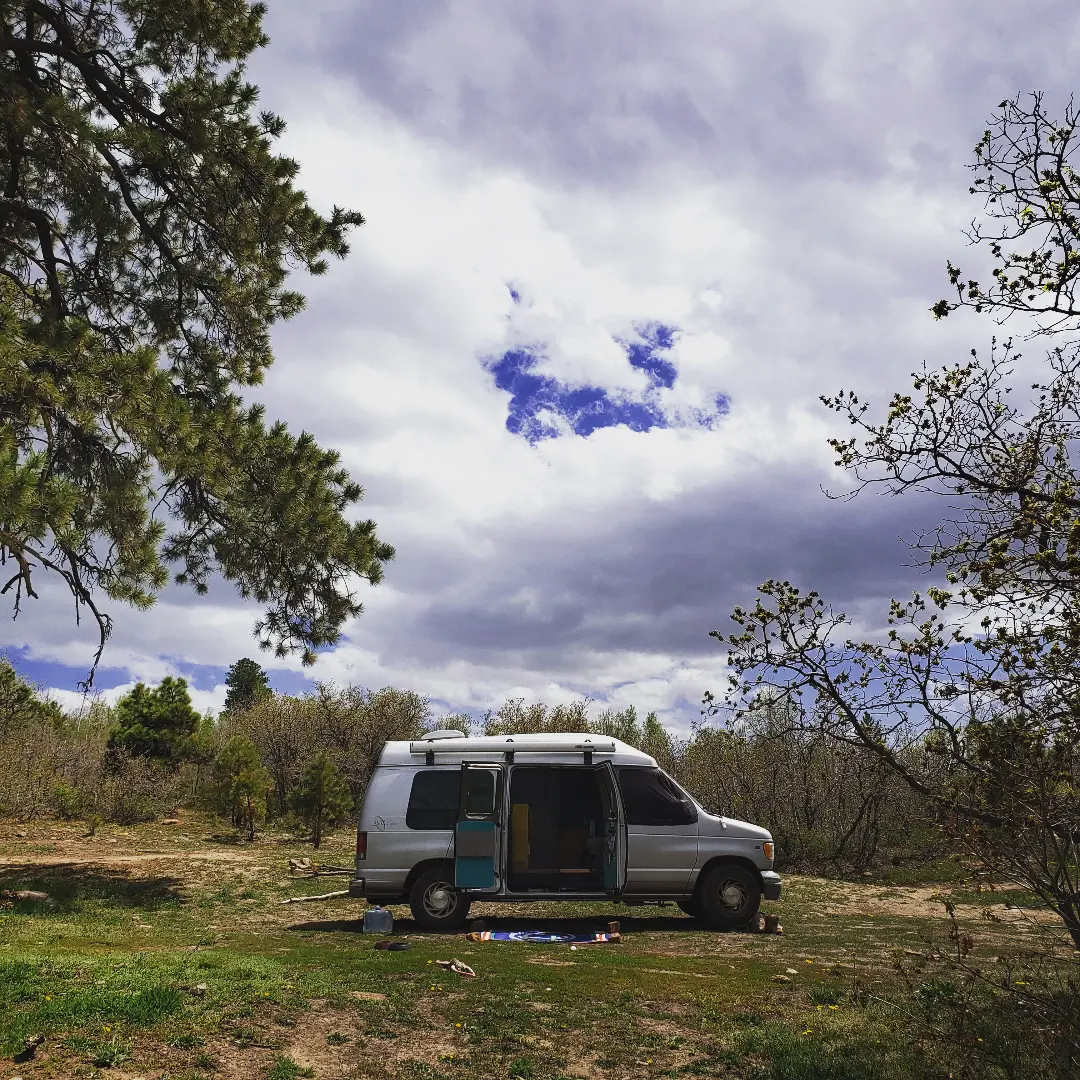
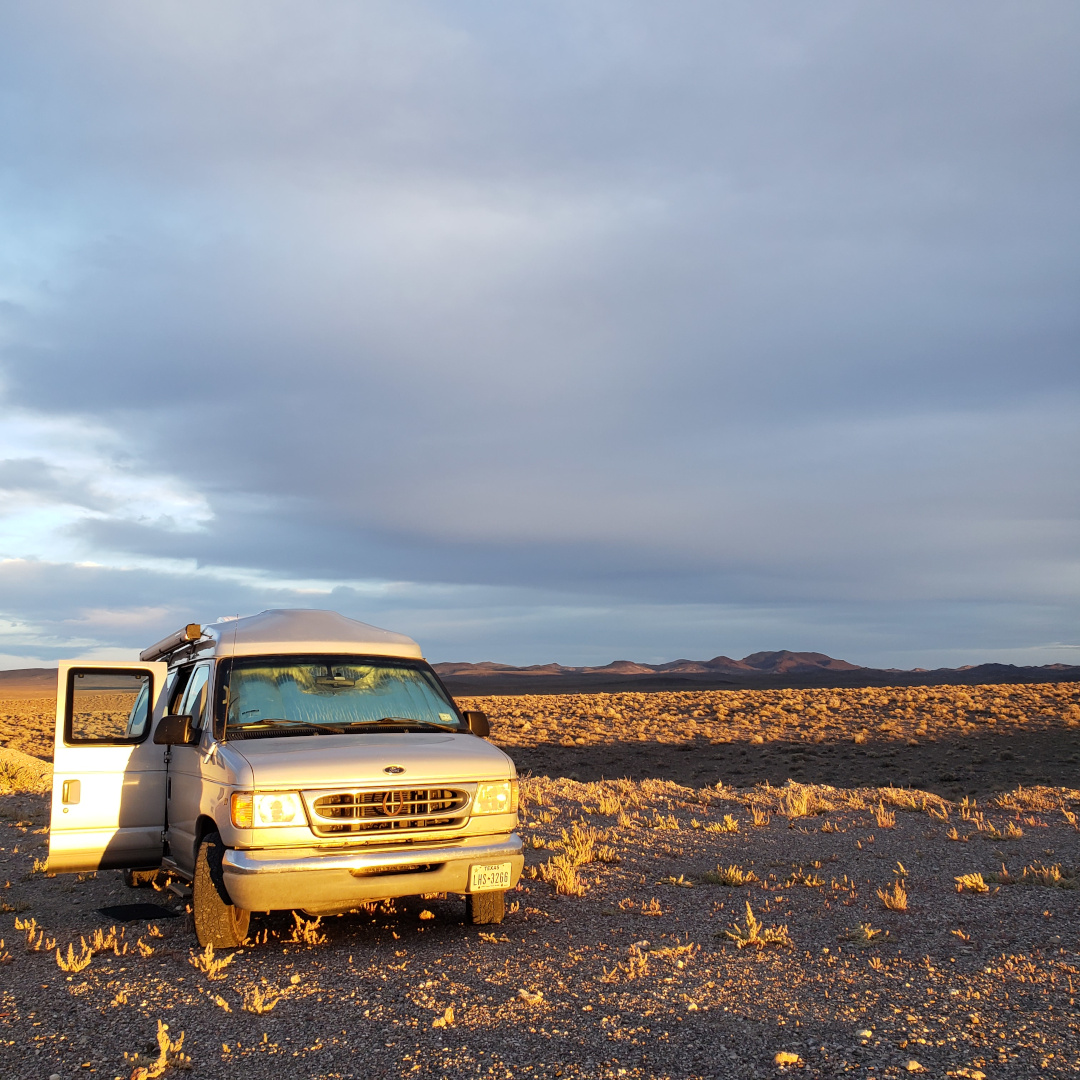
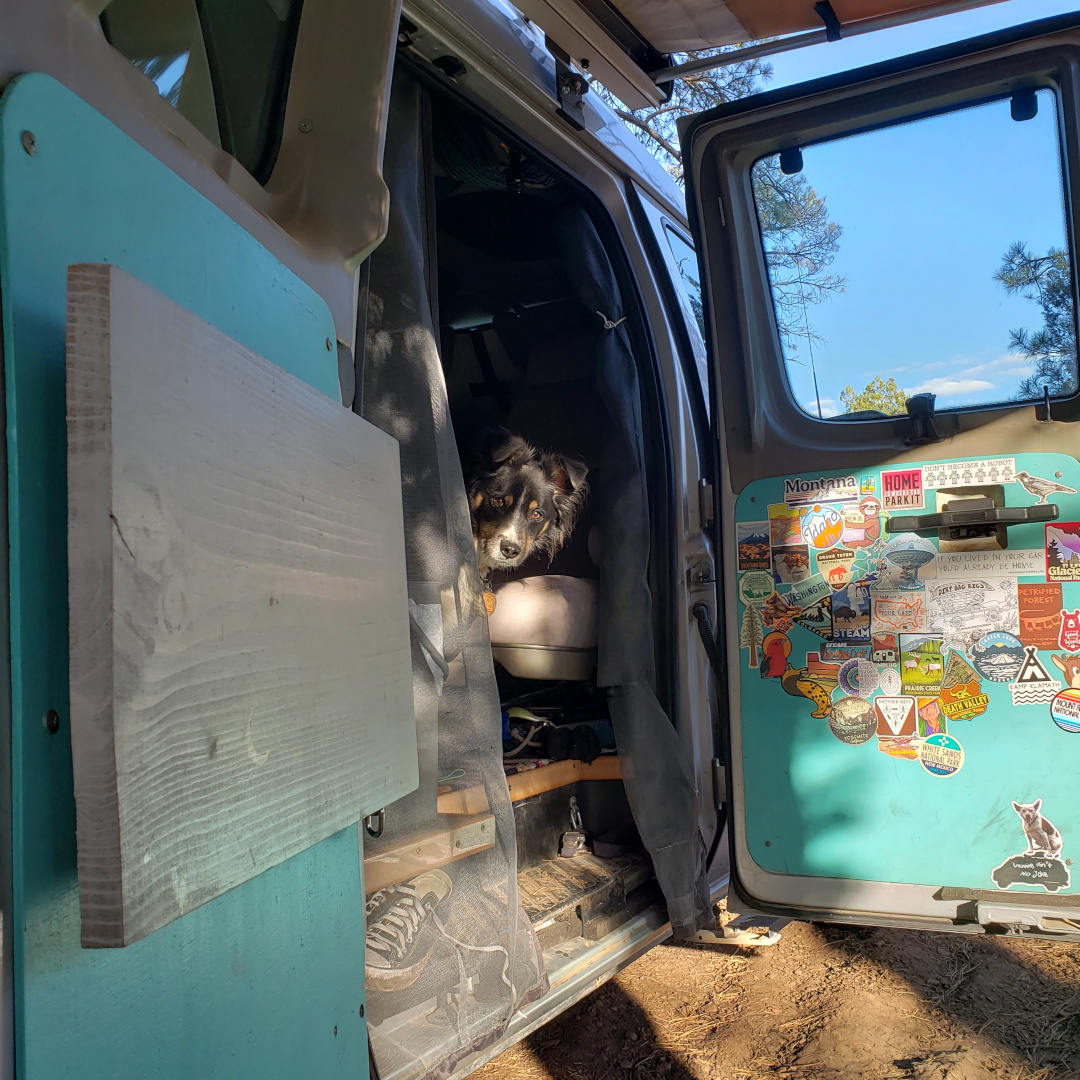
Change of Pace
This lifestyle taught me to slow down and move more intentionally through life.
During the first two years, I avoided major highways and Interstates as often as possible, opting instead to travel along remote back roads. Eager to explore new landscapes, visit National Parks, and fully embrace the nomadic lifestyle, I changed camps every 1-14 days. Some areas warranted daily moves, and others welcomed a full two weeks, but my average was three nights before moving again.
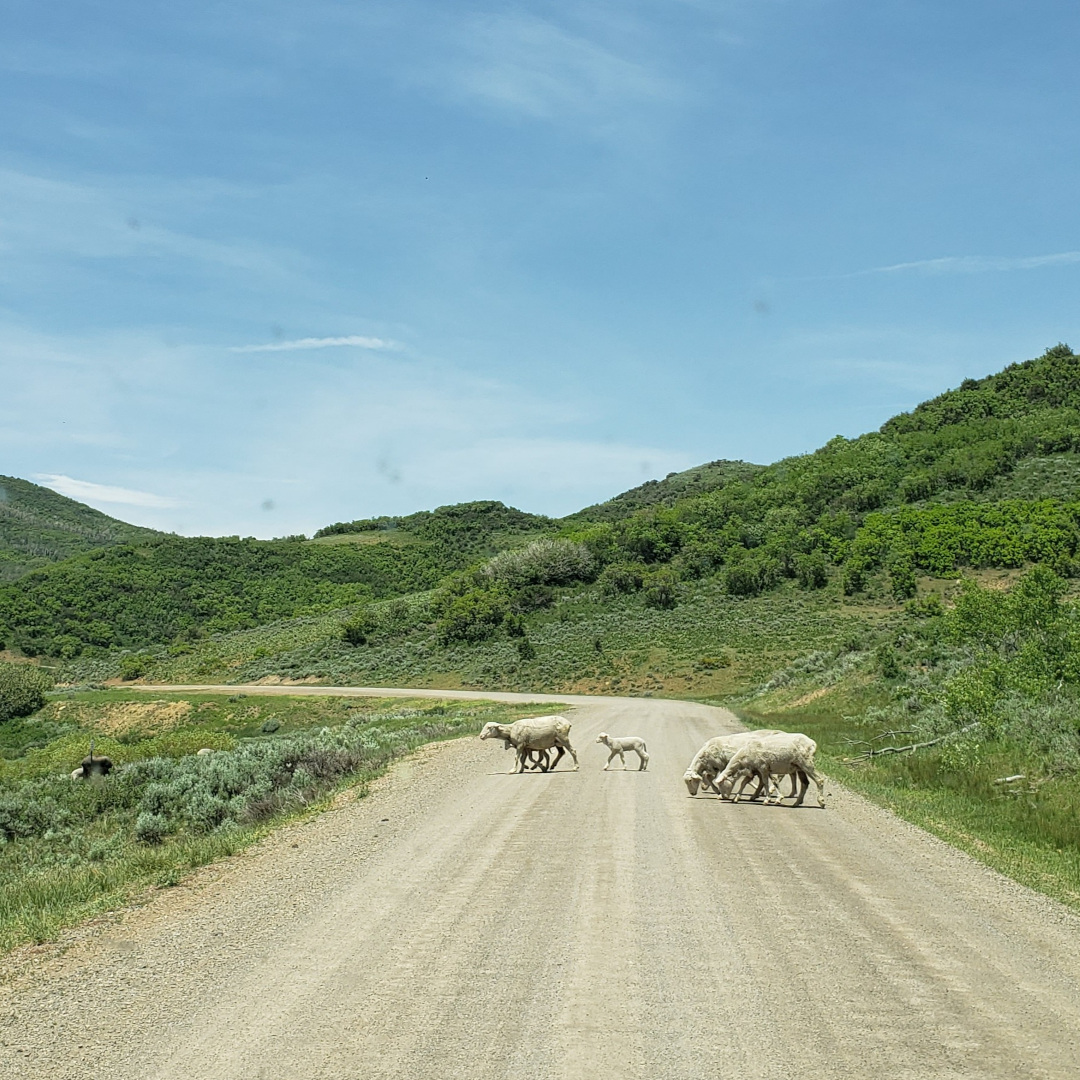
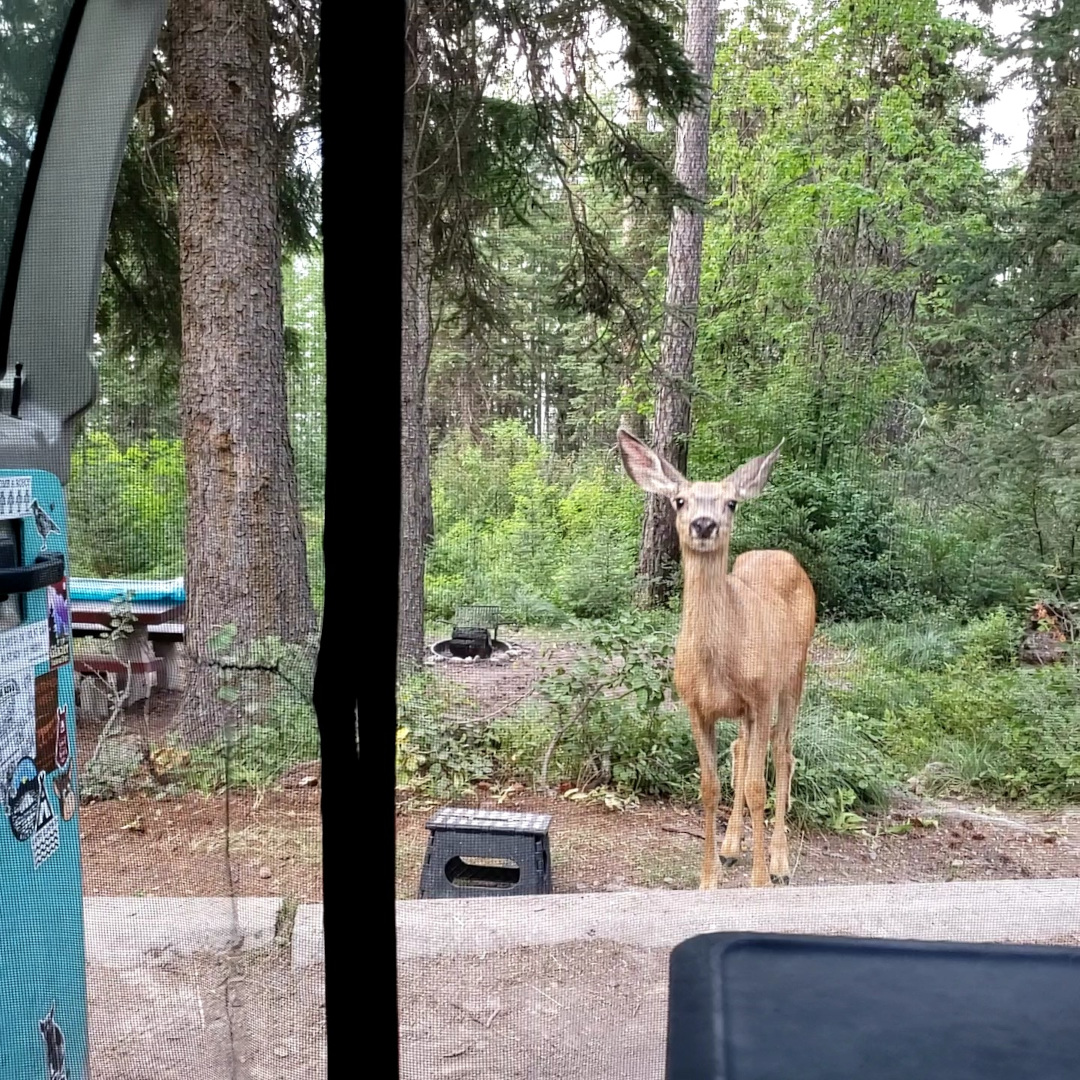
This past year, I slowed down even more. I now stay in one place for longer periods – months, rather than days. This not only helps keep costs down, but allows more time for creative endeavors.
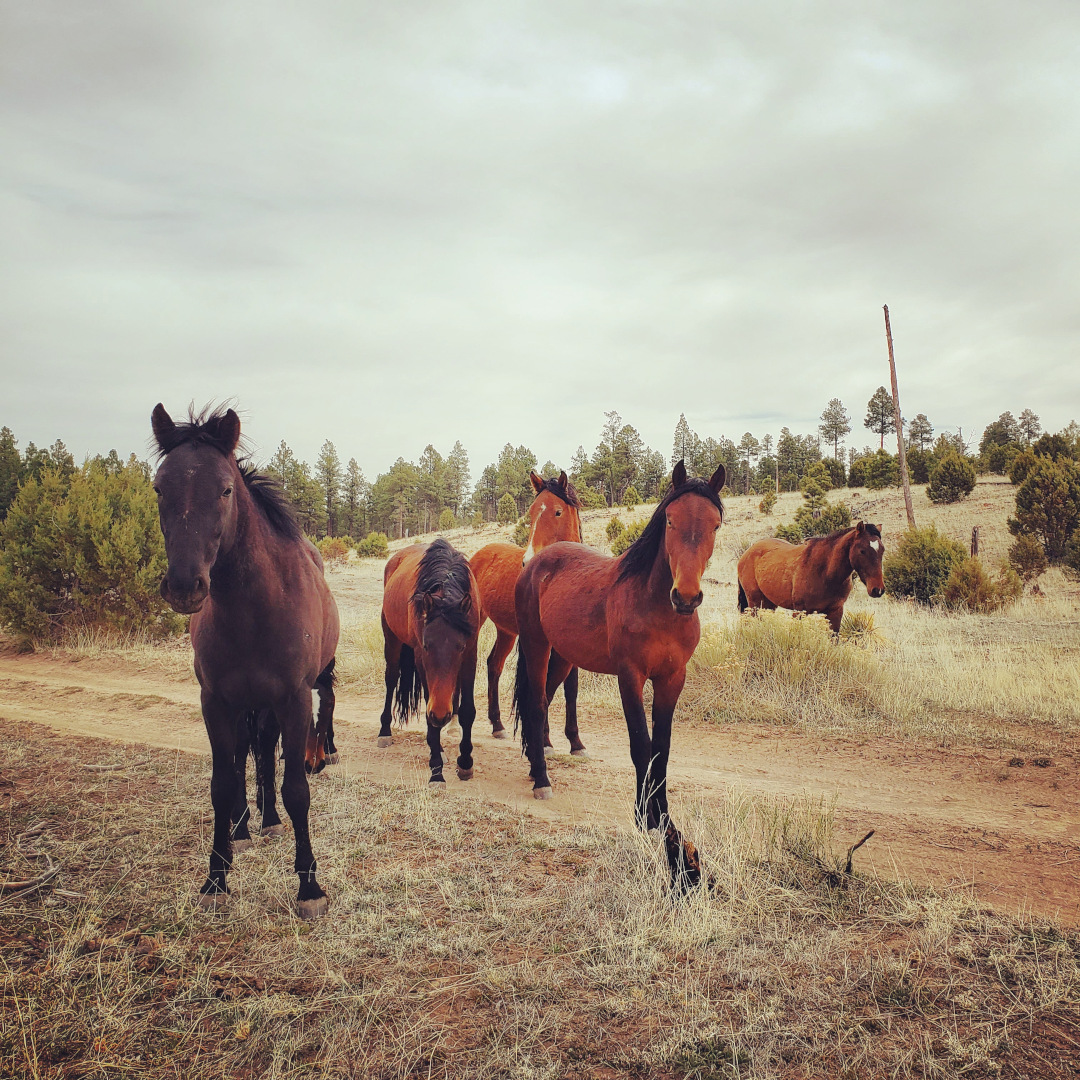
Driving around the country and seeing a kaleidoscope of landscapes is awe-inspiring but can also be exhausting. I always made time to paint, but after a long drive or multiple moves, I would be too depleted to dip into the well of creativity. Staying in place eliminates the mental energy required to drive, find a campsite, unpack the van, repack the van, move, navigate to another spot, and repeat every time I relocate. Long-term stays allow me to maintain a state of calm, which directly fuels my creativity and nourishes my soul.
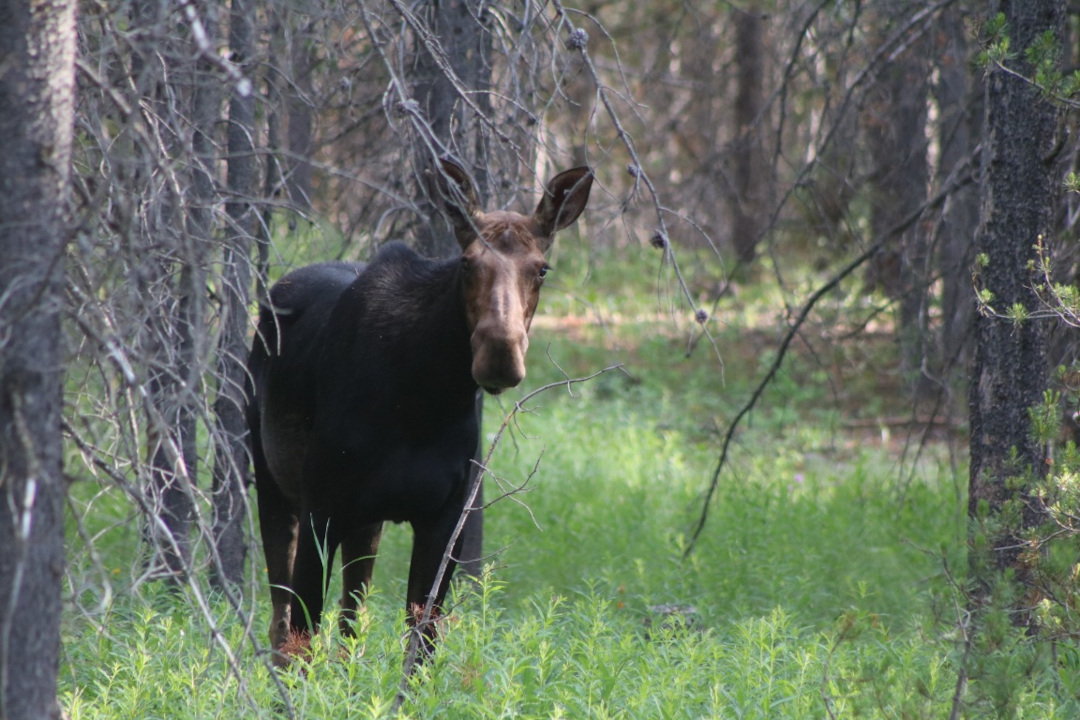
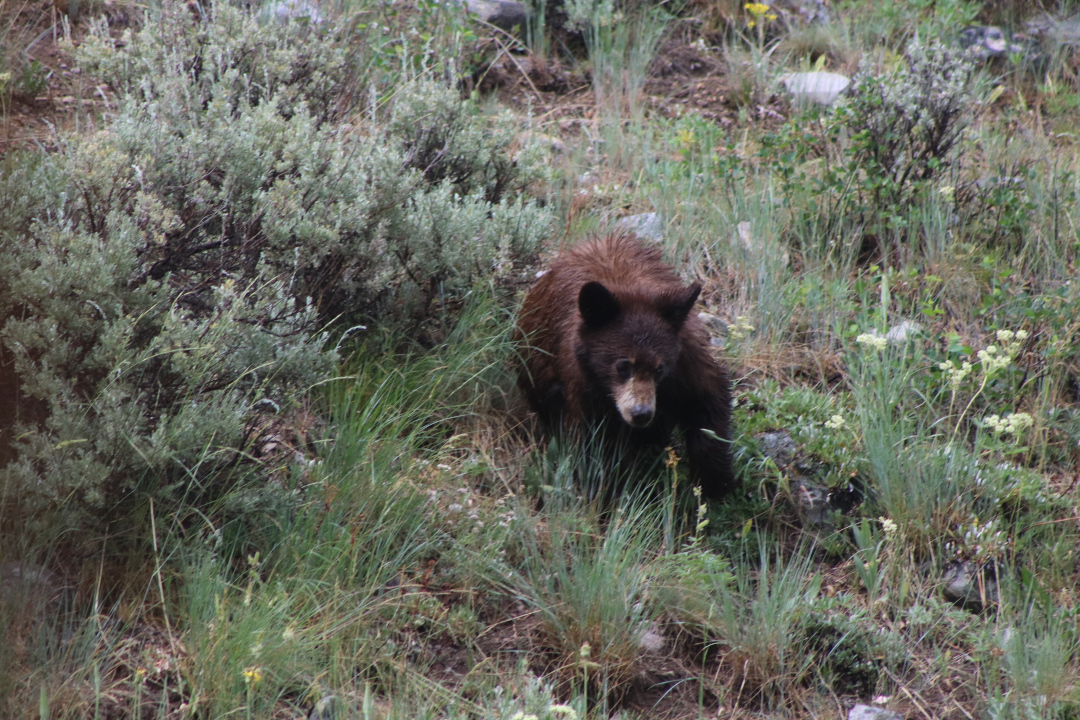
Alone But Not Alone
My belief that people are inherently good has been proven on numerous occasions by friendly people I meet along the way. While most interactions are short, the kindness of basic human connections remains with me.
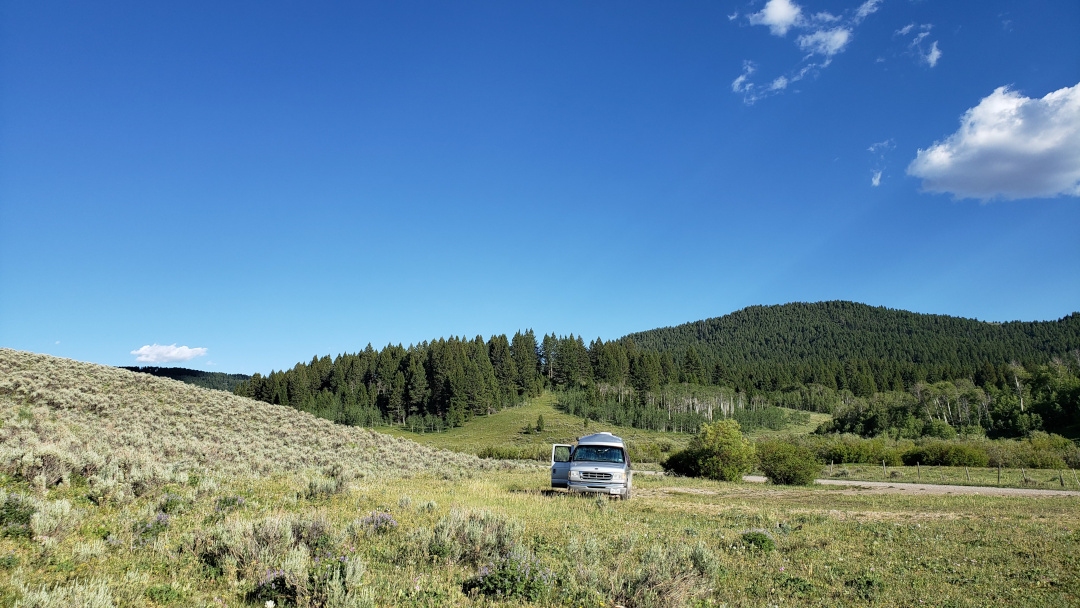
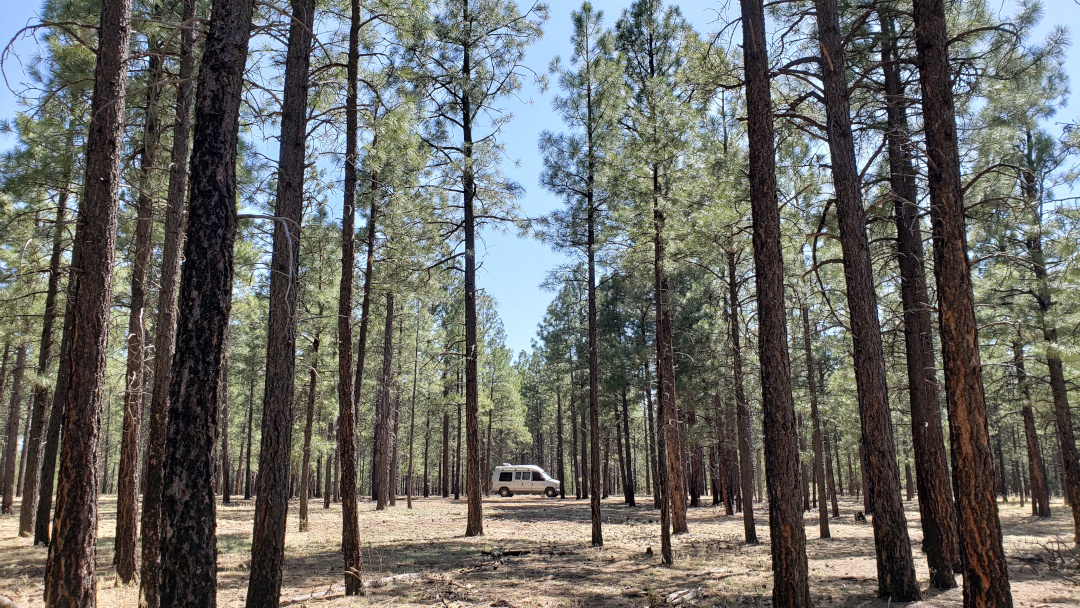
Living alone in the van can get lonely, even for someone like me who is perfectly content with my own company. There’s no shame in loneliness, it’s an emotion everyone feels. I learned to not let it consume me by reminding myself that while I may be technically alone, I know I’m not really alone. I have all of you out there supporting me, commenting on my posts, and reaching out via text, social media, or phone. Words can’t express the gratitude I feel for the community of people who I know are on this journey with me.
Get By With A Little Help From New Friends
Another new experience this past year was visiting and staying with friends and family along the way, as well as traveling with new friends. Staying as a guest in the home of someone you know is one thing – spending weeks camping in the wilderness with a new acquaintance is a fast track to deep friendship.
Sometimes I meet people while walking through a forest, other times it’s in a parking lot where a quick conversation turns into a deeper connection.
Meeting kindred spirits is like finding members of a tribe you didn’t realize you belonged to. It’s marvelous to encounter people who share my love of the nomad lifestyle and with whom I can talk about the odd, sometimes embarrassing, or weird idiosyncrasies that are a result of living in a tiny and mobile space. I’m grateful this new network of friends continues to grow.
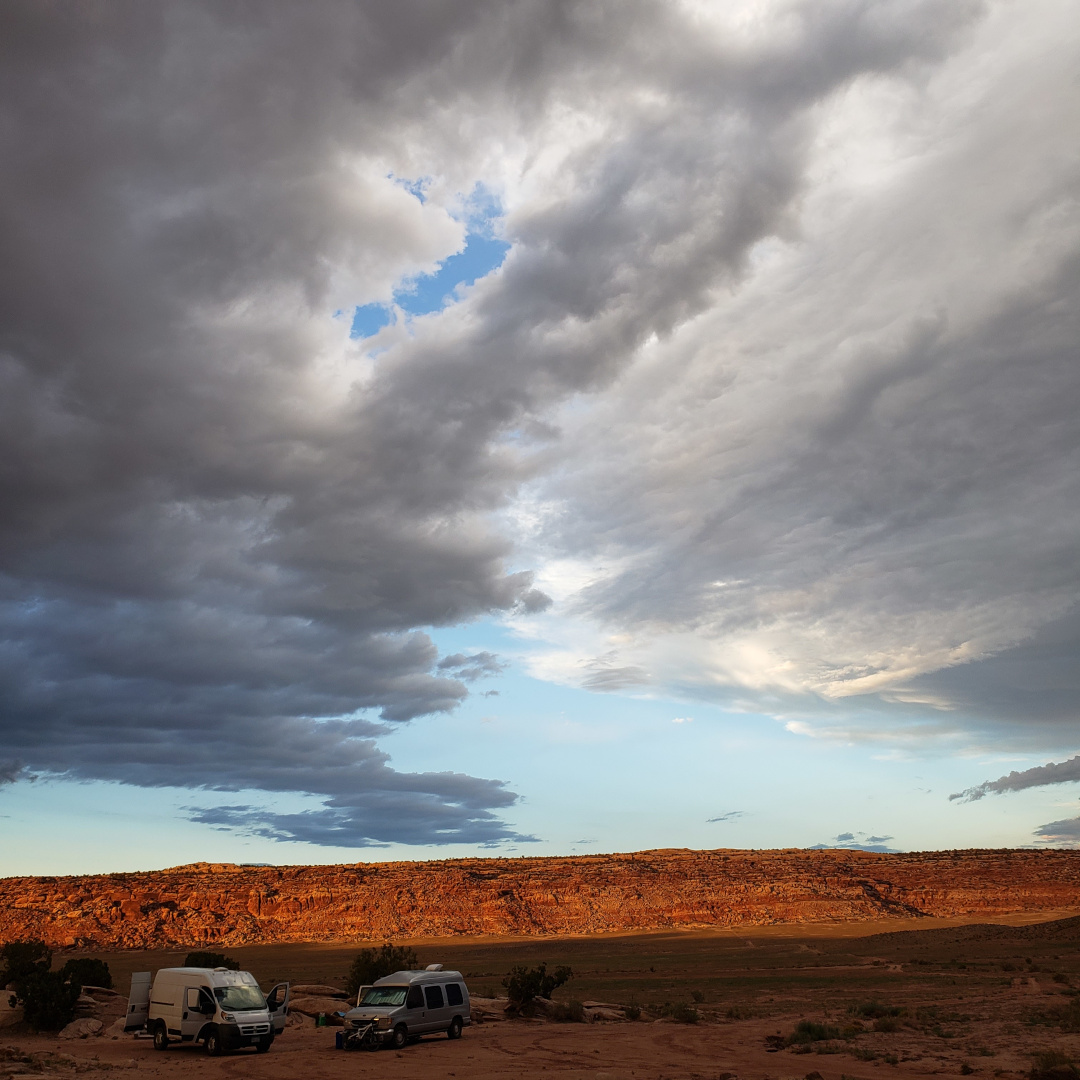
Tricks of the Trade
I frequently receive questions about life on the road, so I compiled this list of general tips (in no particular order). If your question isn’t answered here, leave a comment below or send me an email.
- You’re going to bump your head. A lot.
- Hide a spare key somewhere externally on your van. You’ll use it more often than you think.
- Whatever you do, do NOT “drive as fast as you can” over washboard dirt roads, no matter how many people suggest it. That might be fine for other vehicles, but in a van, it results in everything shimmying out of place, bouncing off the floor, nails wriggling loose, teeth rattling, and quite possibly the tightest death grip on the steering wheel possible.
- There’s no right or wrong way to live in a vehicle, nor is there a right or wrong vehicle to live in.
- It’s not always fun, but the good days outweigh the bad.
- Not everyone will understand your lifestyle. Some will mistake you for being homeless, and many will blatantly accuse you of “milking the system” or receiving some sort of Government subsidy. I’ve learned to just ignore this.

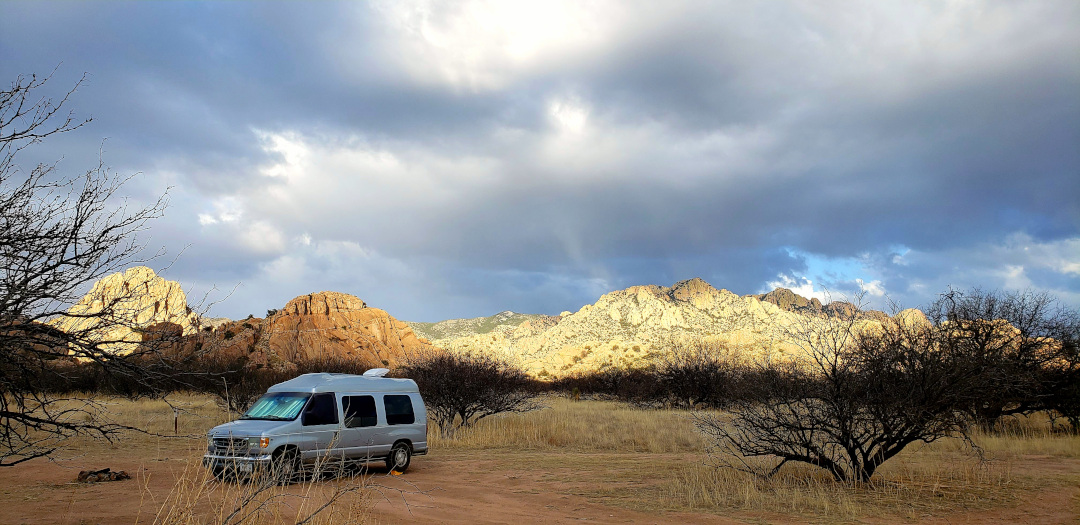
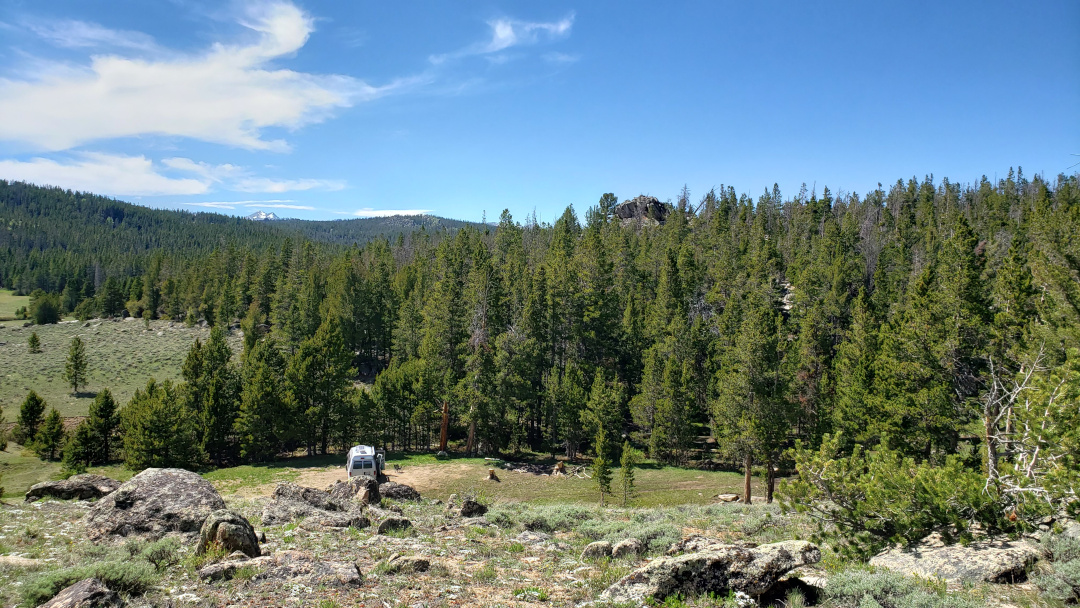
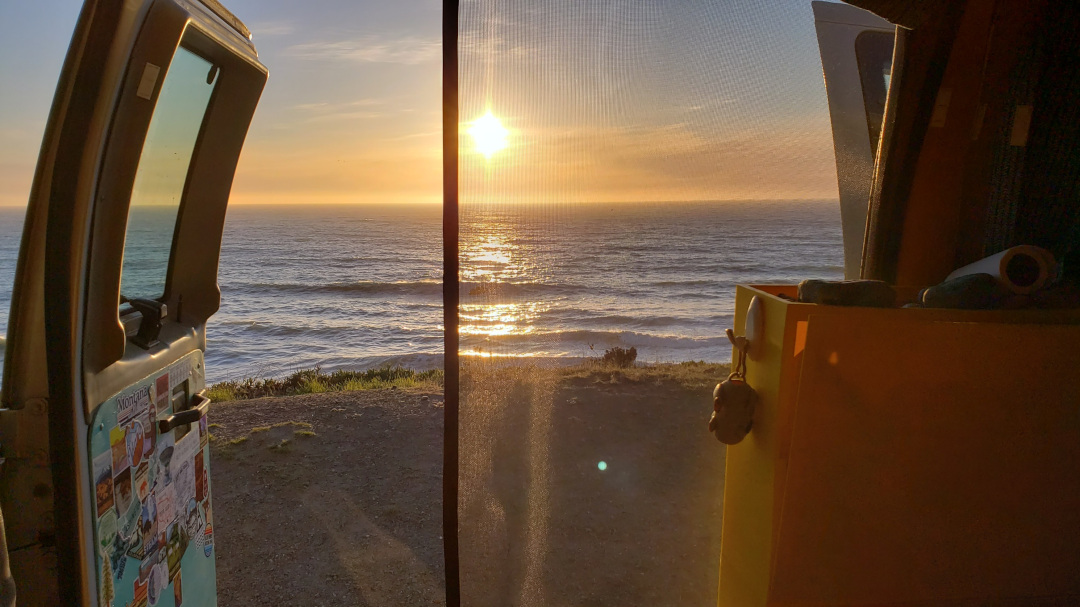
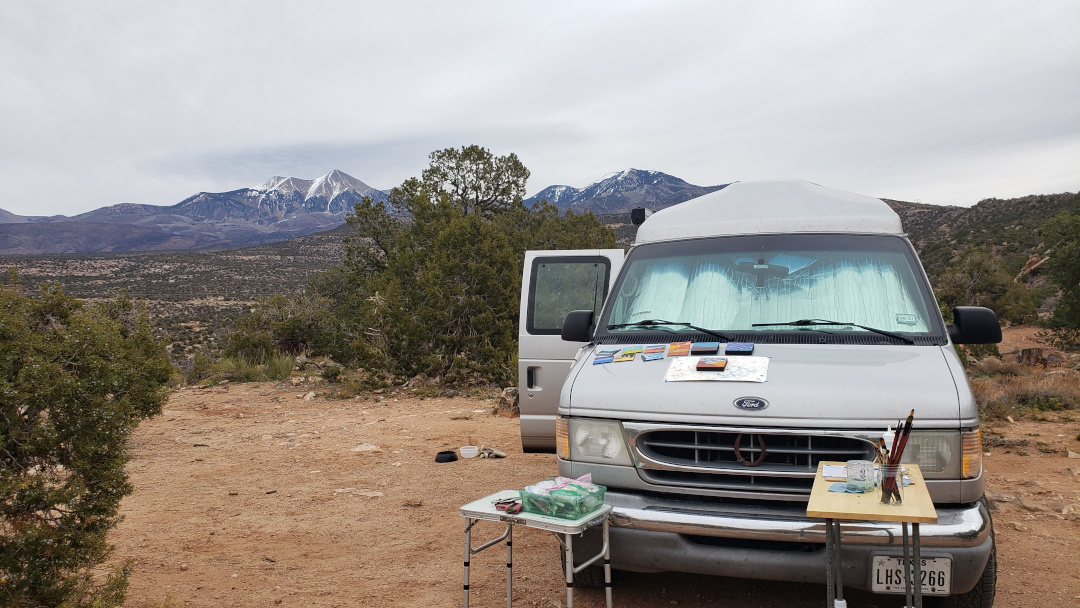
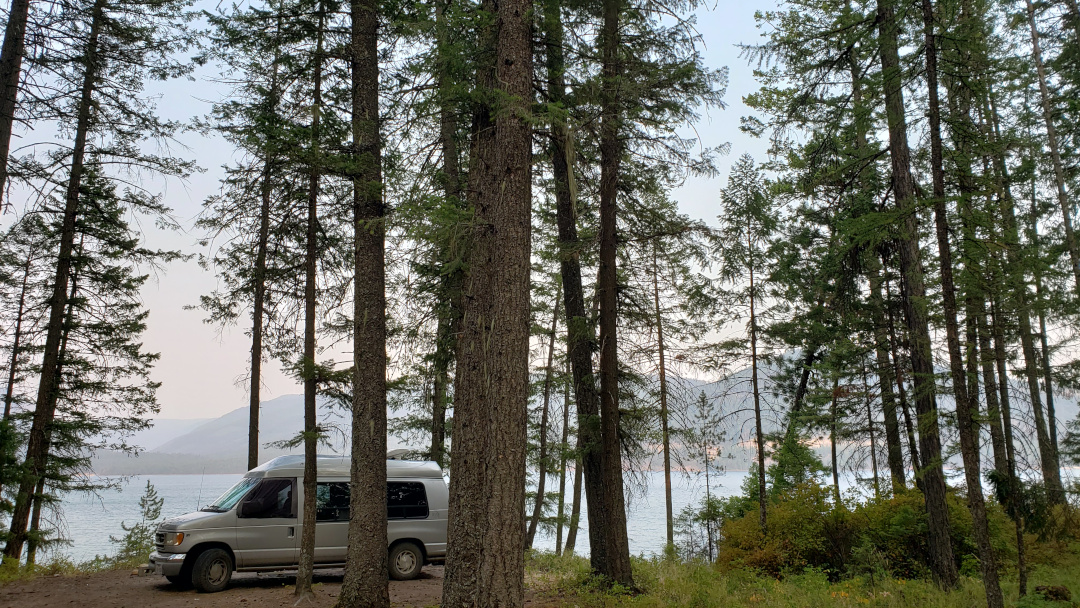
- Traveling with a dog means 98% of your decisions will be based on their needs instead of your own, and a dog will limit your ability to do some things, but having a dog on the road is 110% worth the emotional companionship.
- If you have a dog, buy a “spill-proof” water bowl – because even that will get kicked, stepped in, and turned over at some point.
- There will always be dust in your van, even two minutes after you’ve OCD-cleaned it.
- It’s amazing how quickly you get used to not showering frequently.
- The same goes for laundry.
- You can still cook gourmet meals on a two-burner propane stove.
- You’ll be able to spot a fellow nomad from a mile away, and chances are they’re just as eager yet apprehensive to talk to you as you are to meet them.
- Living in a van is still living, not a permanent vacation.
- Dog parks are a great place to meet people, get tips on the local community, and offer a quick dip into civilization after you’ve been camped alone in the wilderness.
- Always trust your gut and don’t park or go anywhere you don’t feel safe.
- Keep track of where you’ve camped. (I save pins on Google maps) You may want to return to a site, or more often than not, you’ll be able to share campsites with new nomad friends you meet along the way.
- Open the toilet flange BEFORE you open the lid (just trust me on this one).
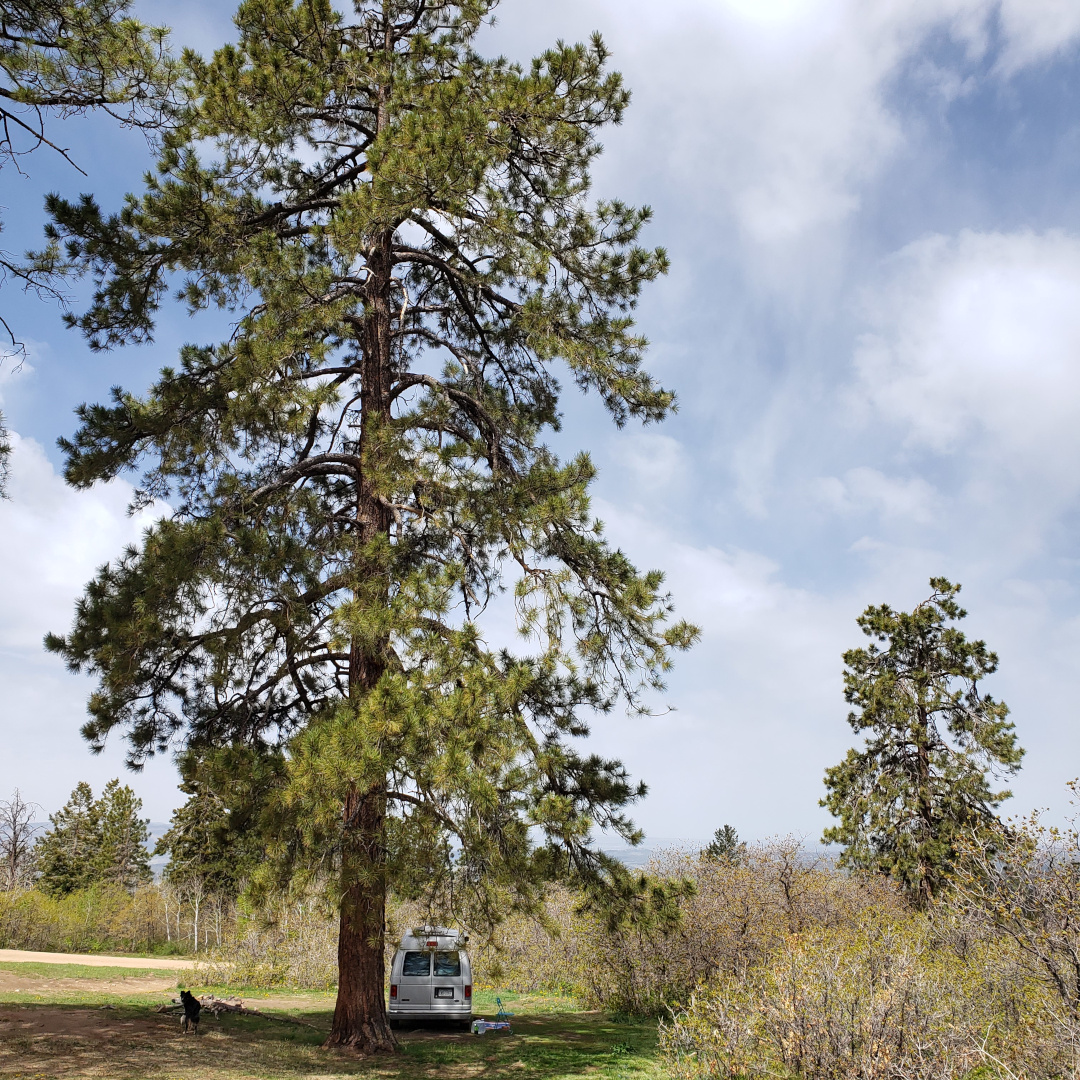
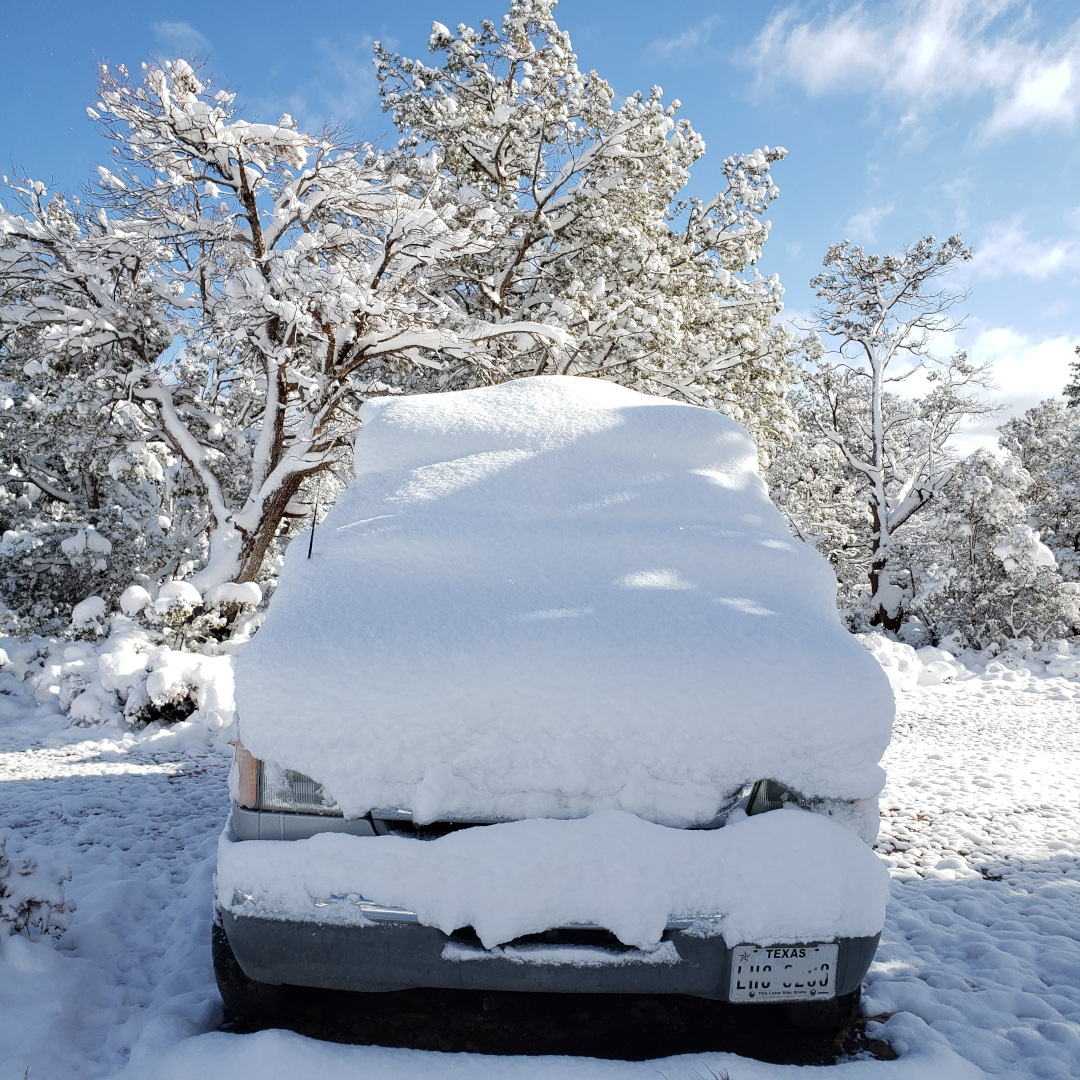
- You will experience every type of weather imaginable.
- Find a campsite before nightfall.
- Get used to seeing unburied human poop everywhere (I know, it’s gross, but that’s the reality).
- Don’t always trust Google maps.
- When in doubt about a road, back up and turn around while you still can.
- Keep a journal. You think you’ll remember everything without logging it somewhere, but trust me, you won’t.
- You need far less than you think you do. You’ll quickly find you need fewer clothes, shoes, cooking utensils, and less than just about everything.
- You can do it! If you want to live in a van or any vehicle for any span of time, you CAN do it.
- Don’t let fear of the unknown hold you back. Take the first step, whether it’s a giant leap or a tiny shuffle forward, you got this, and I promise you won’t regret it.
- Most importantly, have fun! Take time to enjoy everything around you. I guarantee you’ll be delighted by the unexpected.
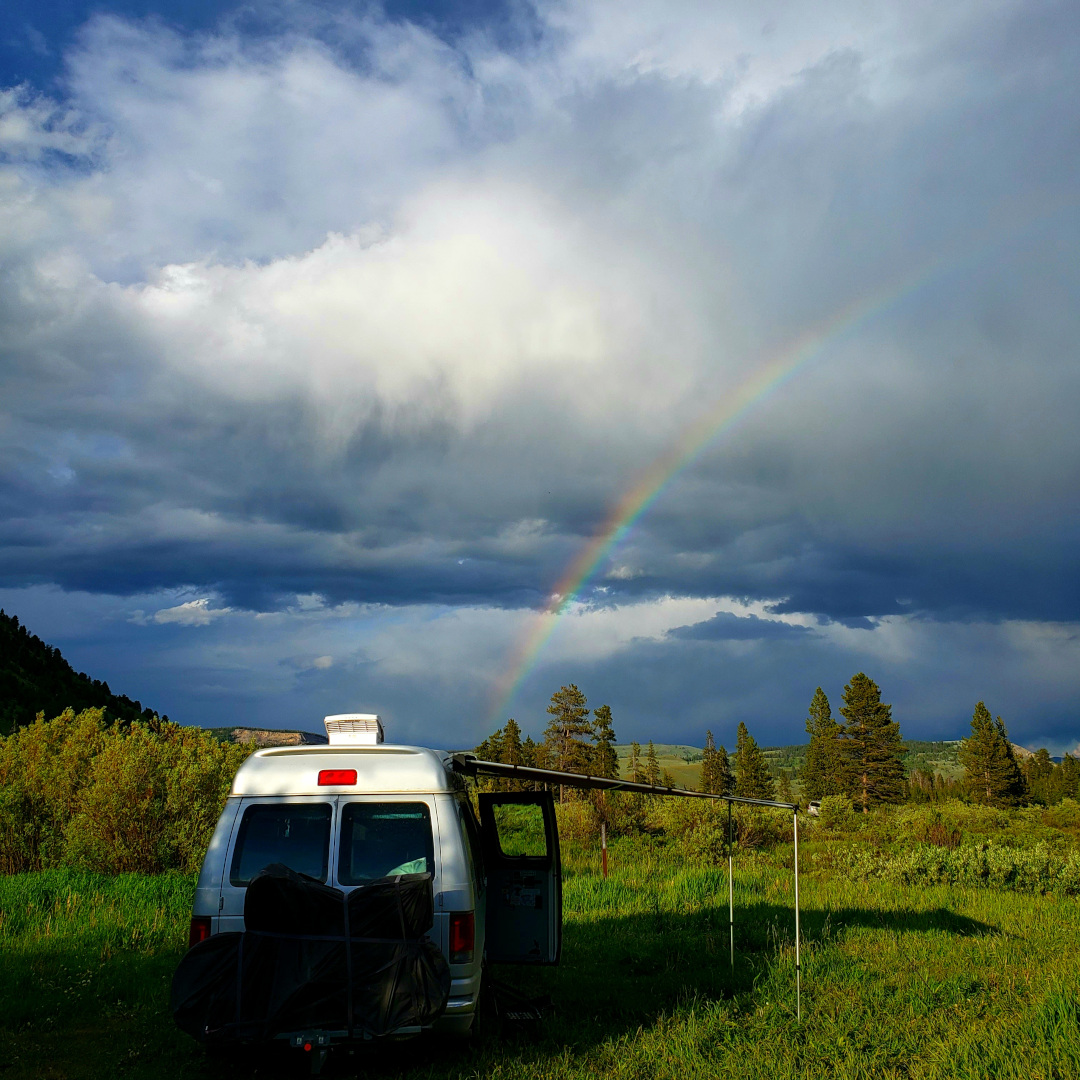
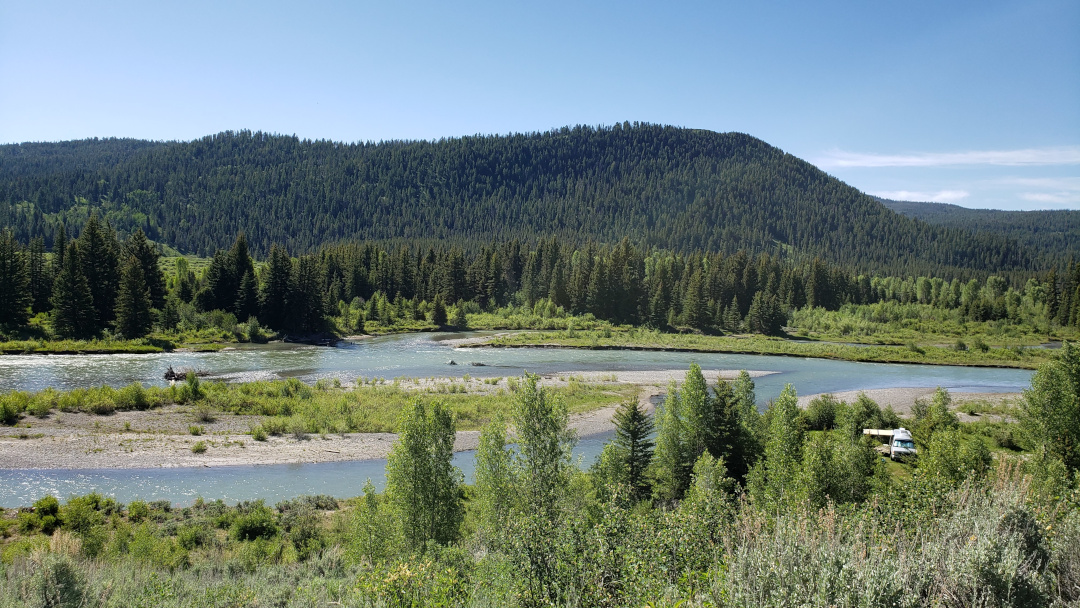
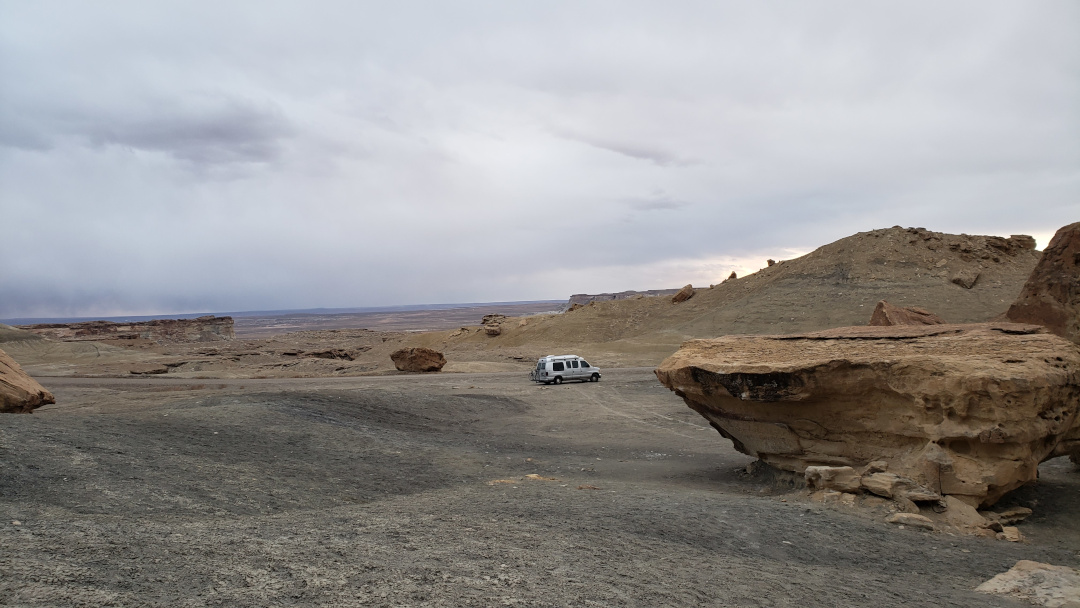
Q&A
I asked my Instagram followers if they had any questions about living in a van. Below are some that didn’t get answered in my writings above. Thank you to those who submitted your questions!
1. How long did it take to adjust to a new lifestyle and become relaxed about it giving up all the luxury?
Starting out, it took about three months for my mind to switch out of “task-list” mode. I’d been so focused on work and building the van, when I was finally on the road, that sense of needing to be doing something all the time continued to nag me. Thankfully that eventually wore off. I’d say, overall, it was probably around the six-month mark when I realized I’d relaxed into the lifestyle and grown accustomed to this new way of life.
As for “giving up all the luxury,” I think that hit before I even moved into the van. I purged all my belongings, gave everything away to friends or thrift stores, and unburdened myself of possessions I’d accumulated over the years. A few months after being in the van, I remember thinking about kitchen appliances I’d once spent weeks contemplating, saving money for, and weighing whether the high price tag was worth the investment, only to hand them over to a thrift store without any thought.
Now, “luxury” is a flushing toilet or hot shower.
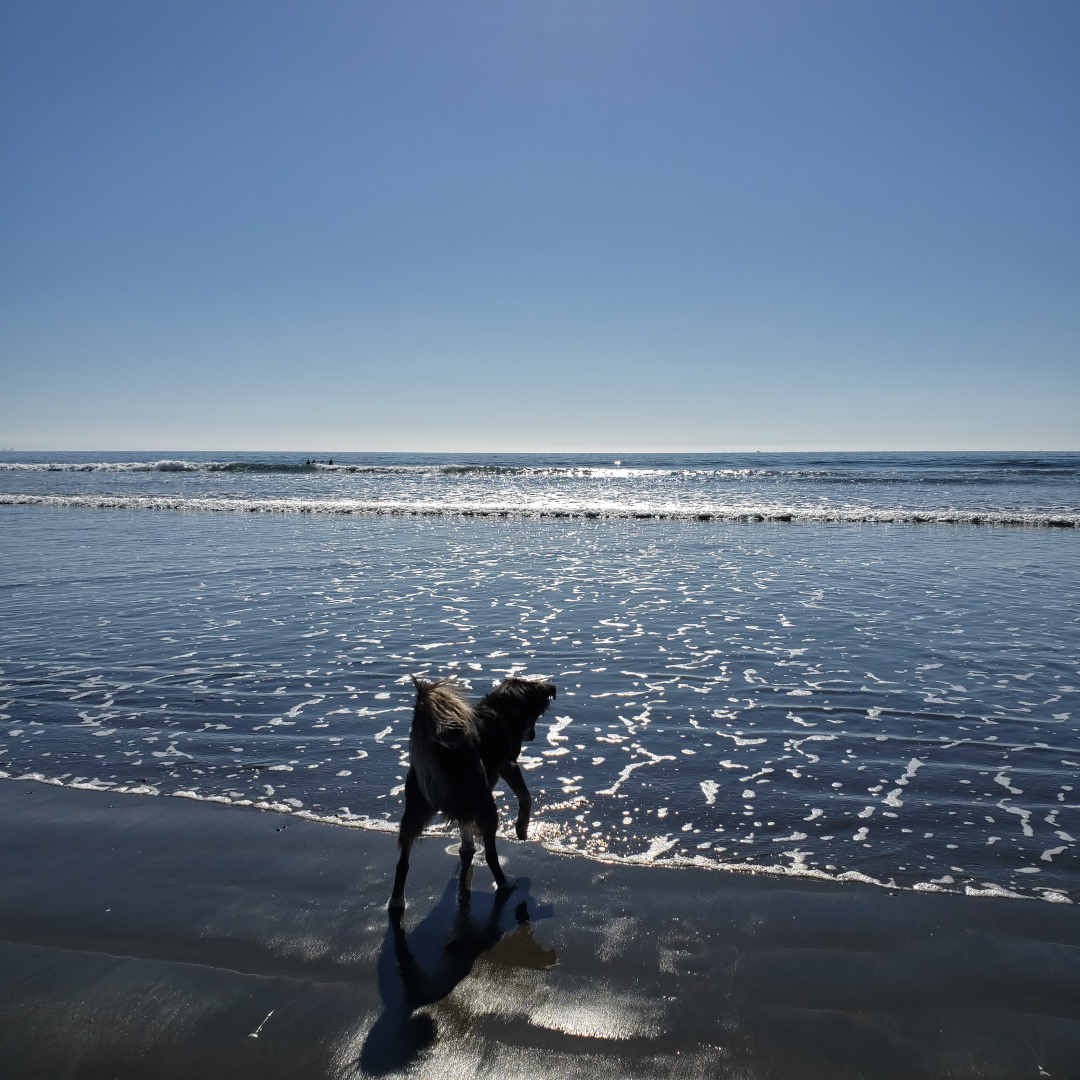
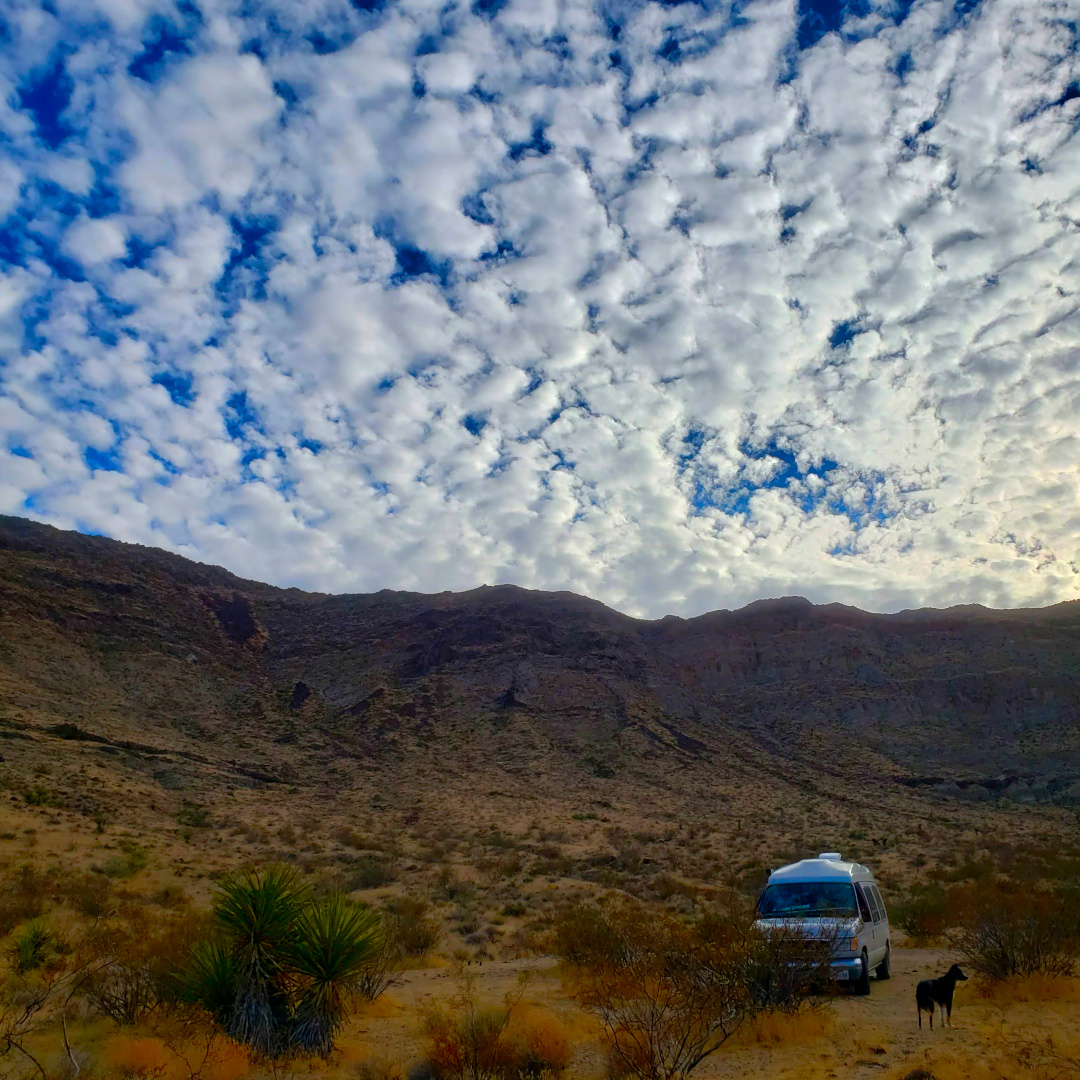
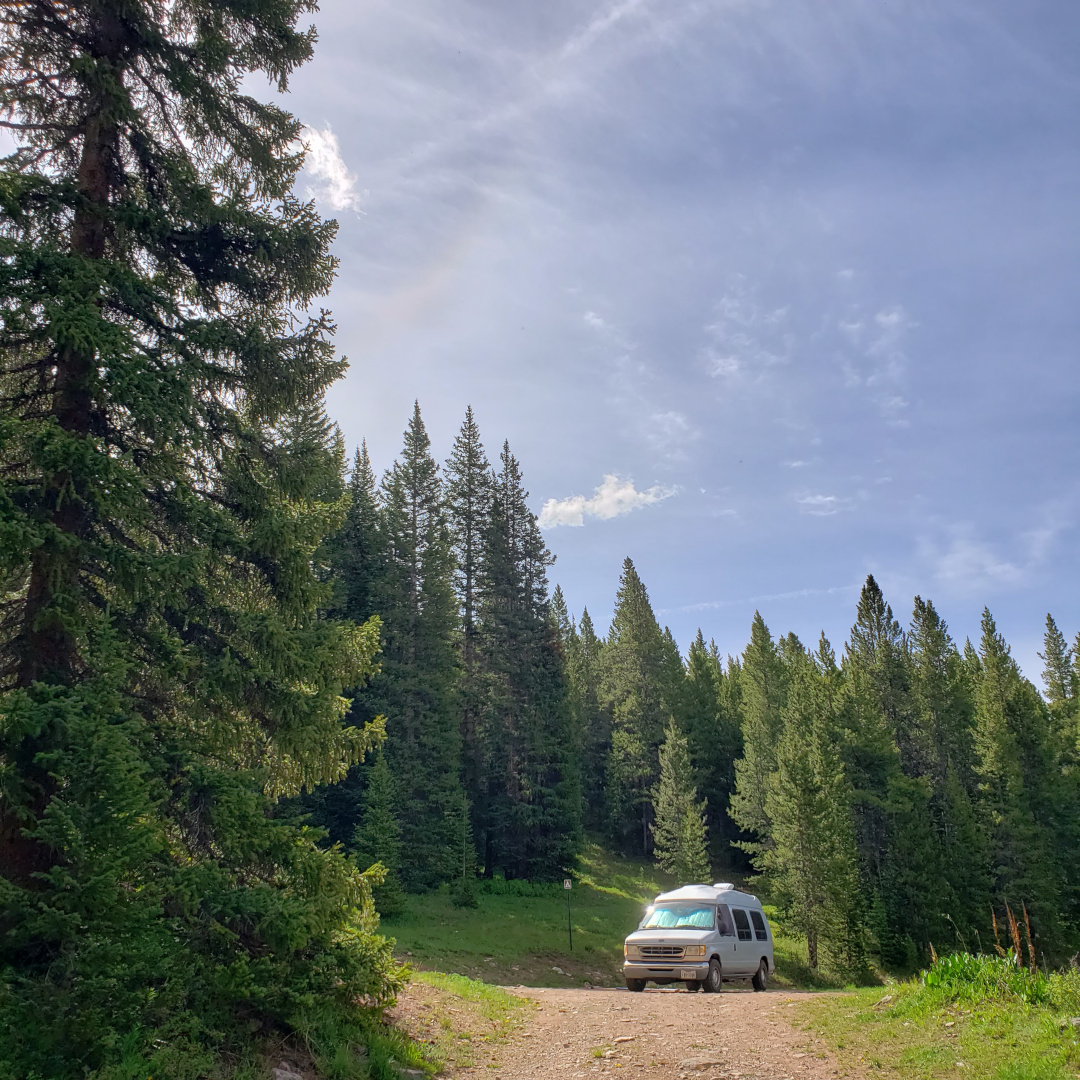
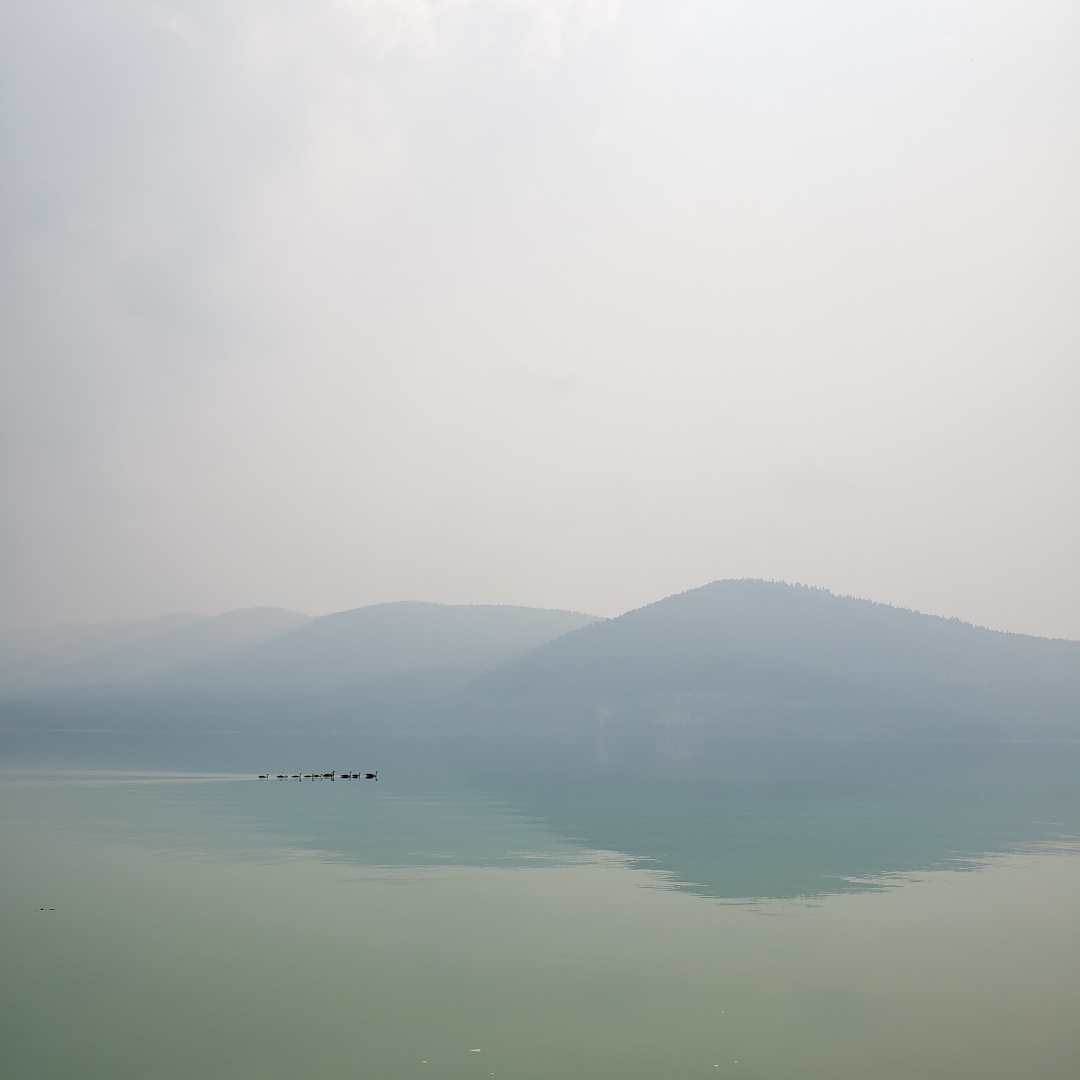
2. What is the prep like before you actually get to hit the road?
I feel like the answer to this is probably different for everyone. It’s easy to fall into the endless rabbit hole of blogs and videos by other people who have done this and shared their techniques. I too was deep in the overwhelming ocean of information before I even began to renovate the van.
Like most things, the more information you consume, the more overwhelming it feels, so my advice is this: just do it. Don’t overthink it. Throw some essentials together and take the leap. I promise you won’t regret it, just don’t let the first few bumps in the road knock you down.
Don’t try to make your first build the perfect setup. I’ve met people living in all sorts of vehicles, from giant tricked-out RVs to compact cars, to nearly empty cargo vans. You don’t need fancy things or to have everything look as polished as what you see on Instagram. Find what works for you, and go with that. One thing I can guarantee is that once you get on the road, you’ll realize you don’t actually need half the things you brought, and you’ll continue to tinker with your setup until it feels perfect for you.
3. Do you wake up with the sun vs set a time?
Living in a van has taught me how to live a life unencumbered by the time on a clock. At some point along the way, my body slid into a natural circadian rhythm. It’s especially evident when I’m parked in the middle of nowhere. I wake before dawn and go to bed early. I eat when I’m hungry rather than by the time on a clock. I typically have no idea what day of the week it is, but I’ve fallen in sync with a more natural cadence of life.
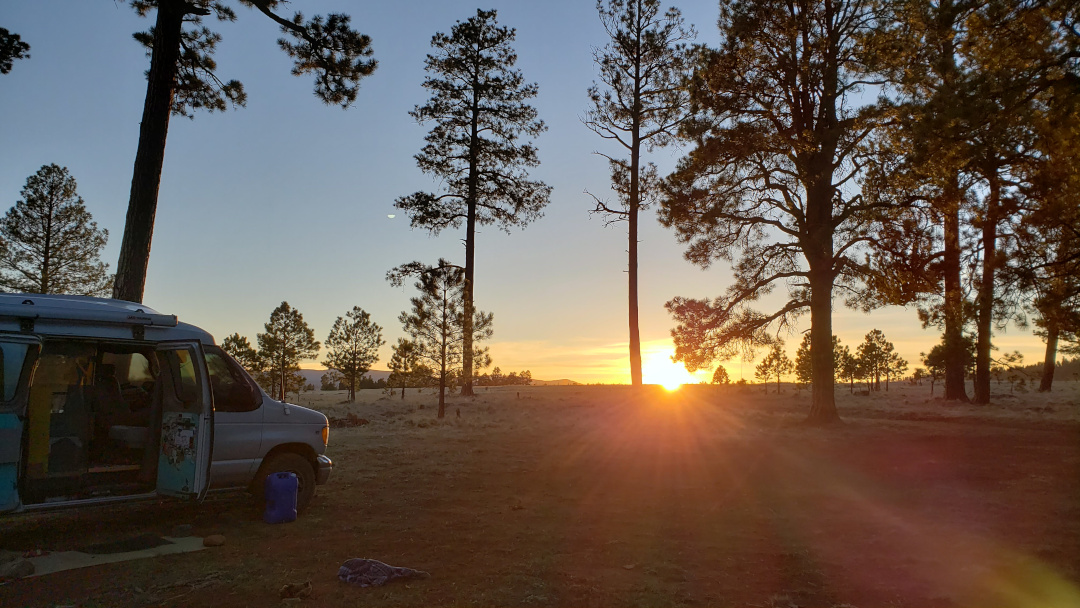
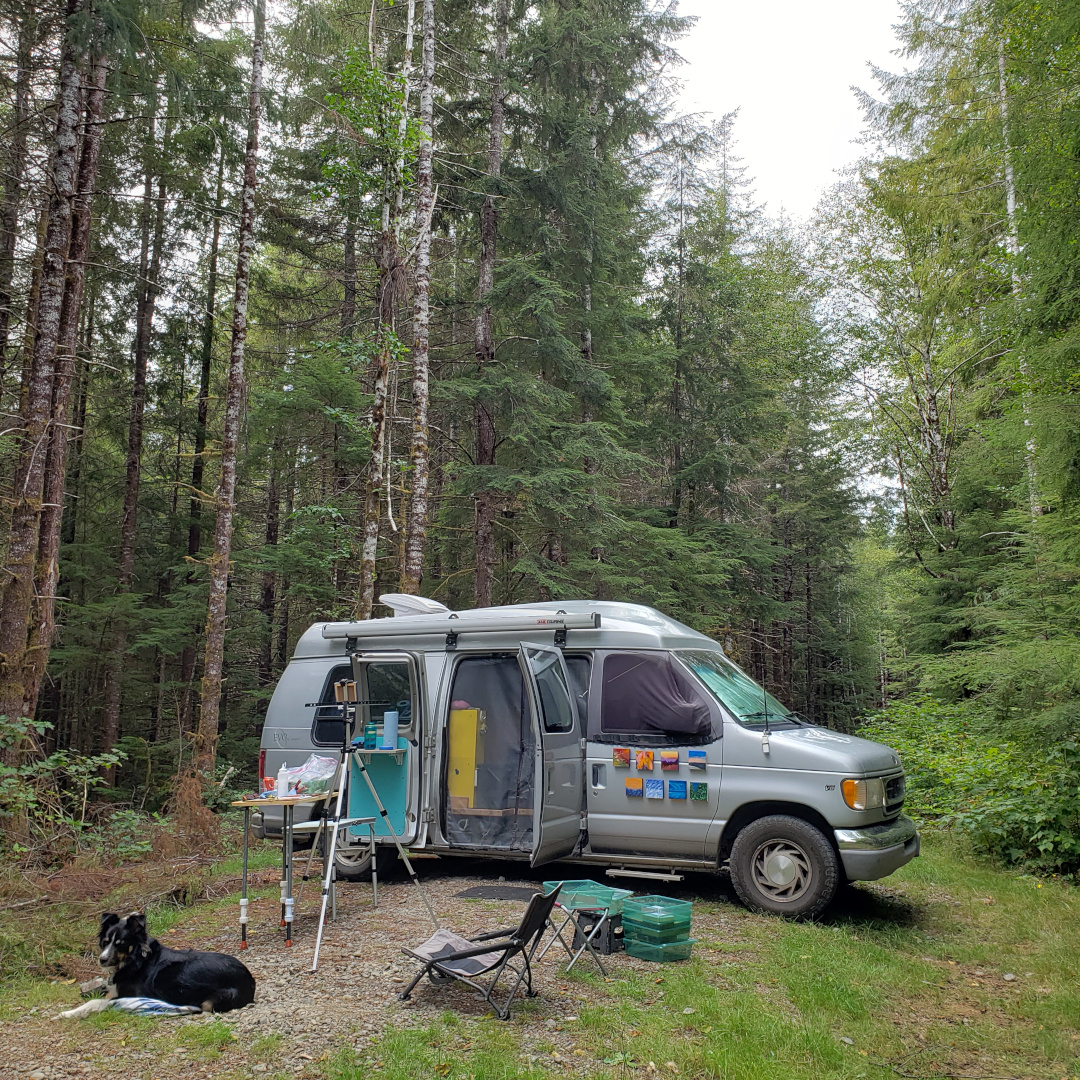
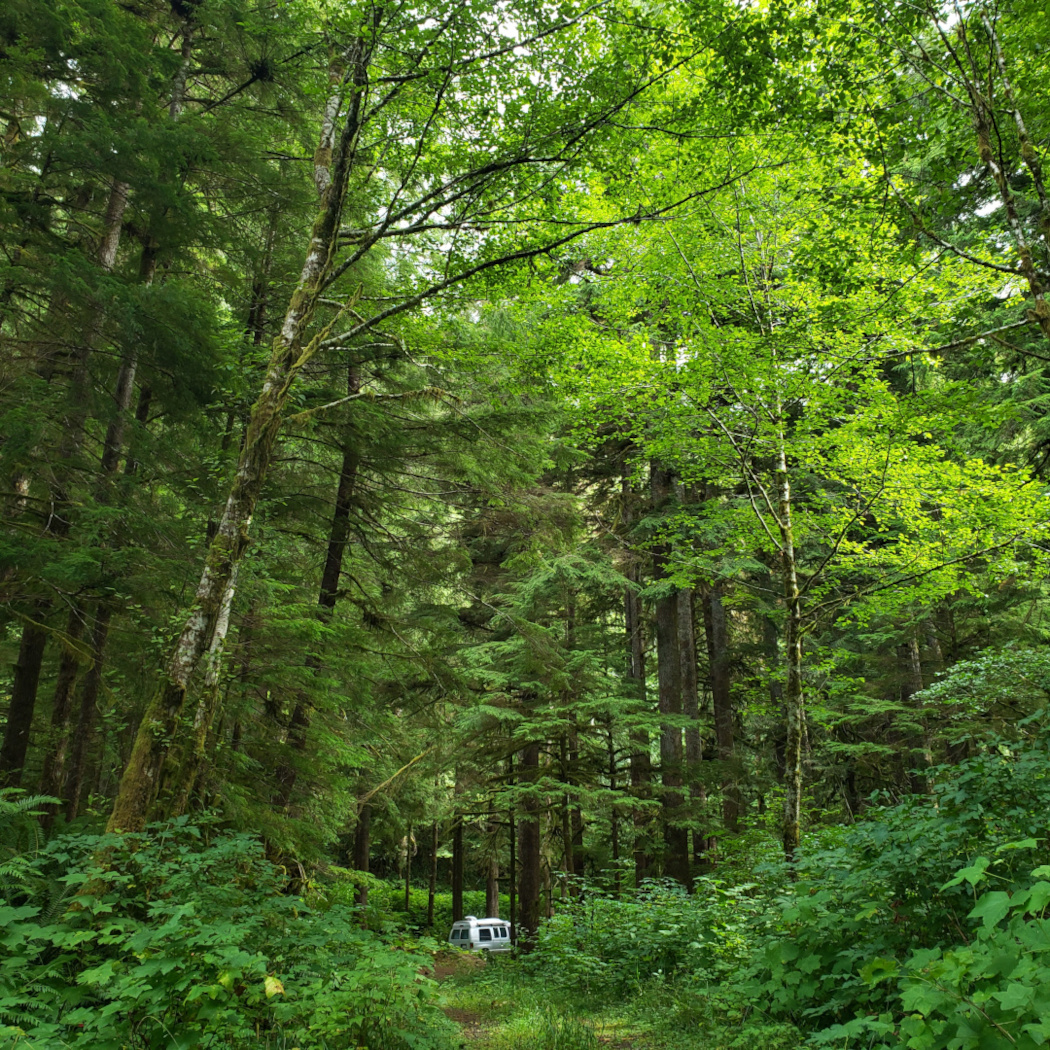
4. How do you cope with moist weather? (could be tricky for both sleeping and painting)
Moisture is one of the biggest nightmares for van dwellers. Winter nights are the worst, waking to windows covered with heavy condensation. I generally try to avoid such circumstances by driving to a warmer climate, but that isn’t always an option. I sleep with the roof fan open to allow fresh (sometimes freezing) air to flow in, and when possible, will do my best to air out the van during the day.
When I traveled through Pacific Northwest, I spent a lot of time in damp rainforests. The humidity was thick, but again, I tried to keep the van open enough to provide plenty of ventilation. I have an anti-condensation mat under my mattress to allow airflow, as well as holes drilled into the bed platform to prevent mold. I also keep a bucket of DampRid under my sink and will place it in a more prominent location when I need to draw moisture from the air.
As for painting, I feel as if I’m in a constant wrestling match between paints and the weather. Paints are finicky, regardless of if I’m using oils or acrylics. I have drawers under my bed to store wet paintings so when I am in a damp environment, I don’t have to worry about paint drying before I can pack things away, but even that can be frustrating at times.
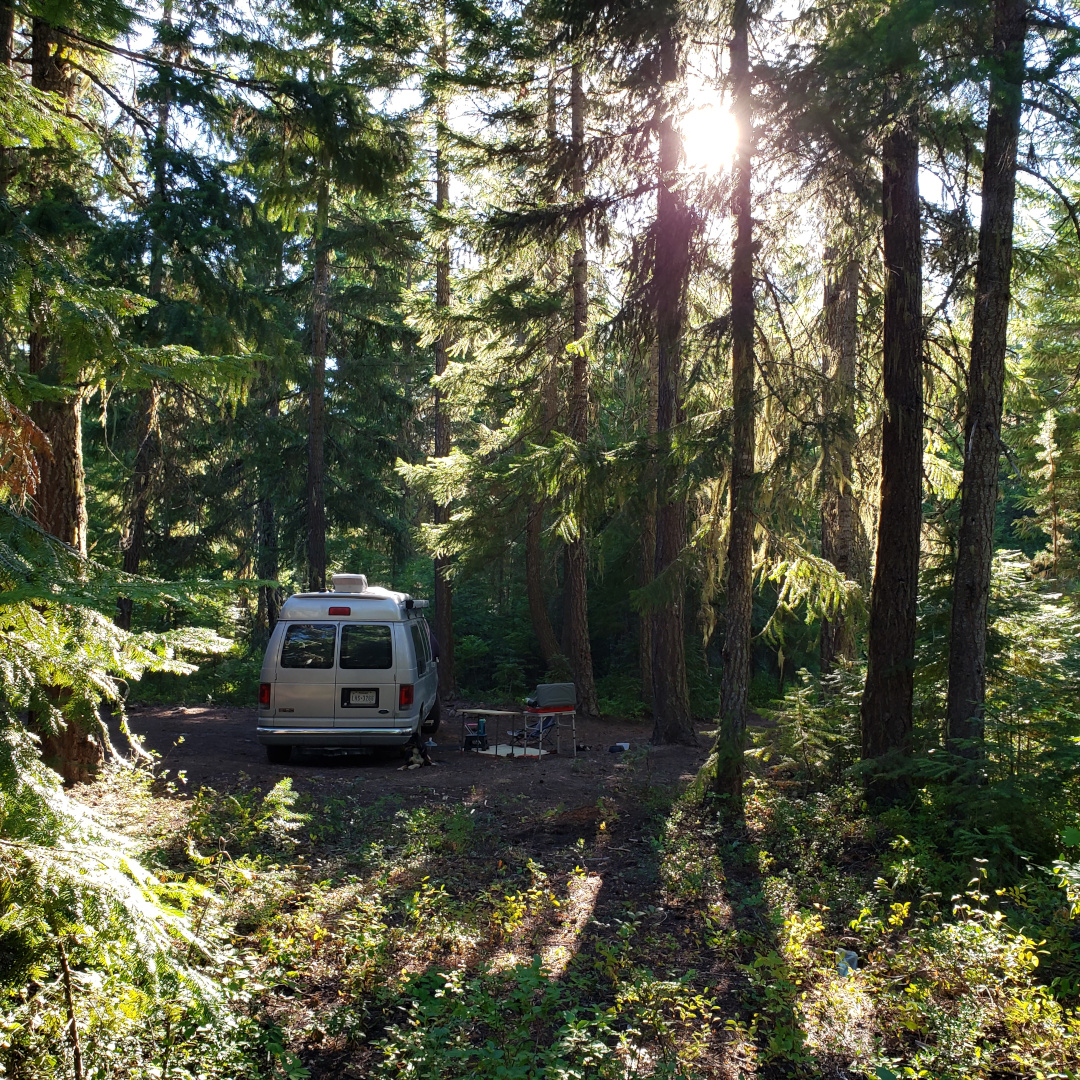
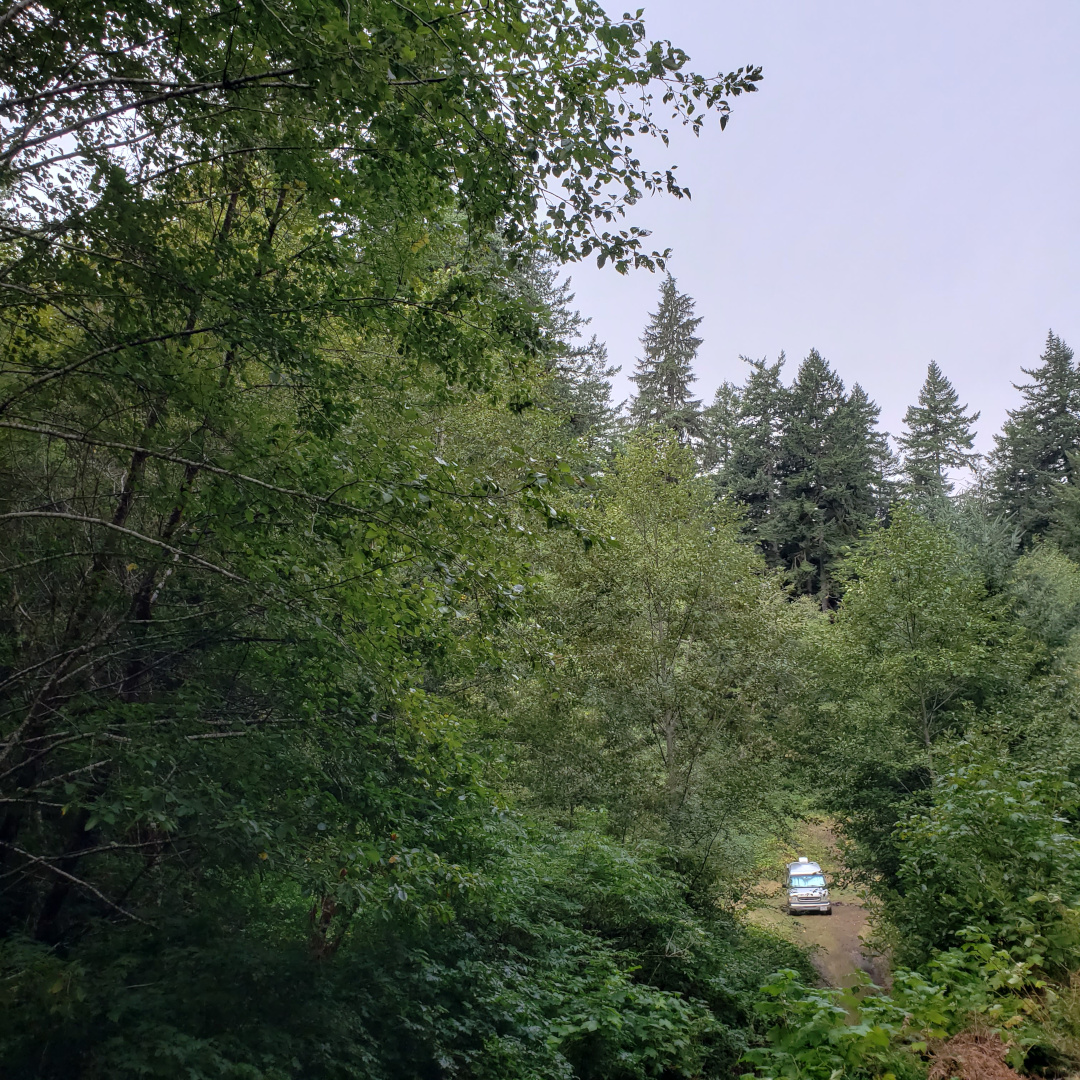
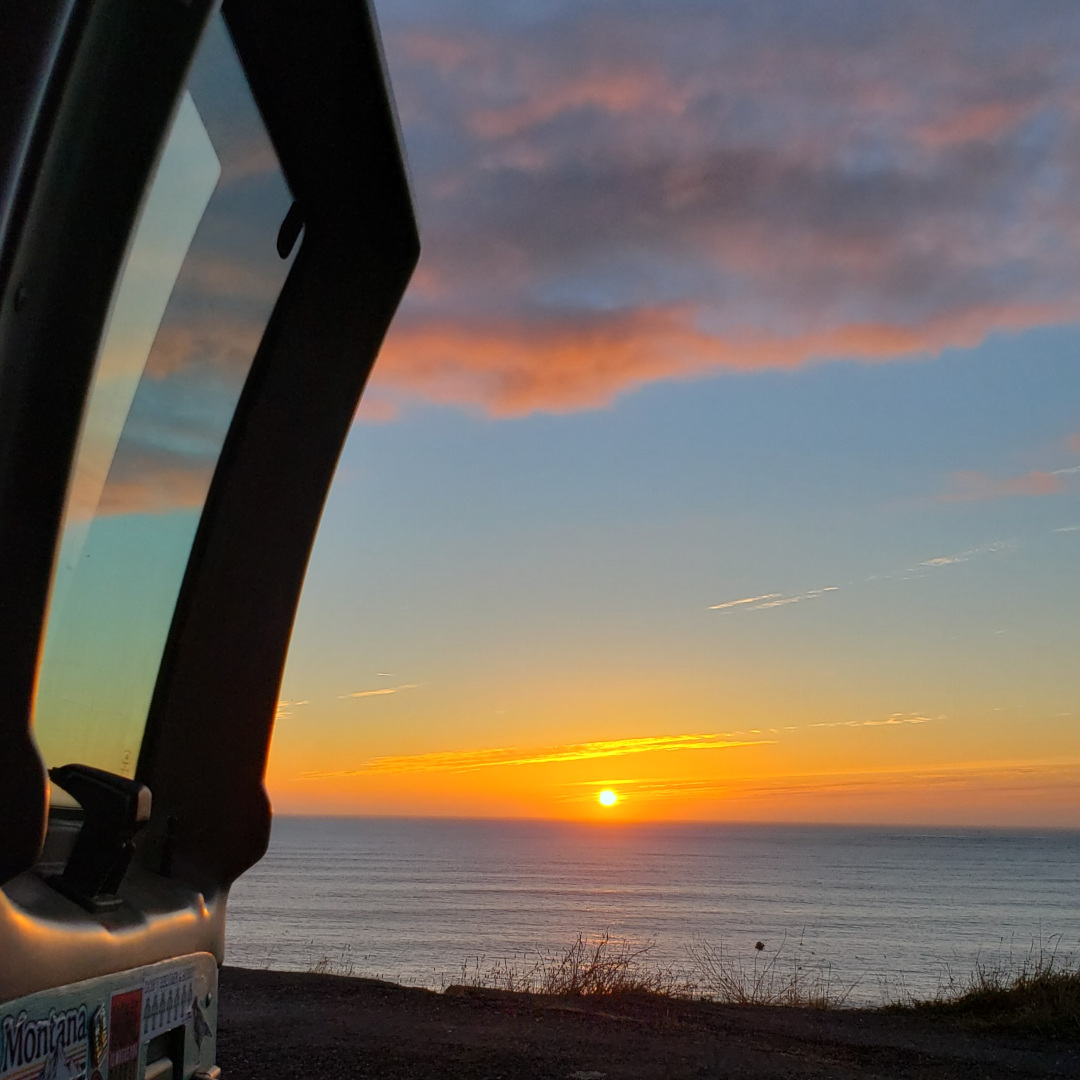
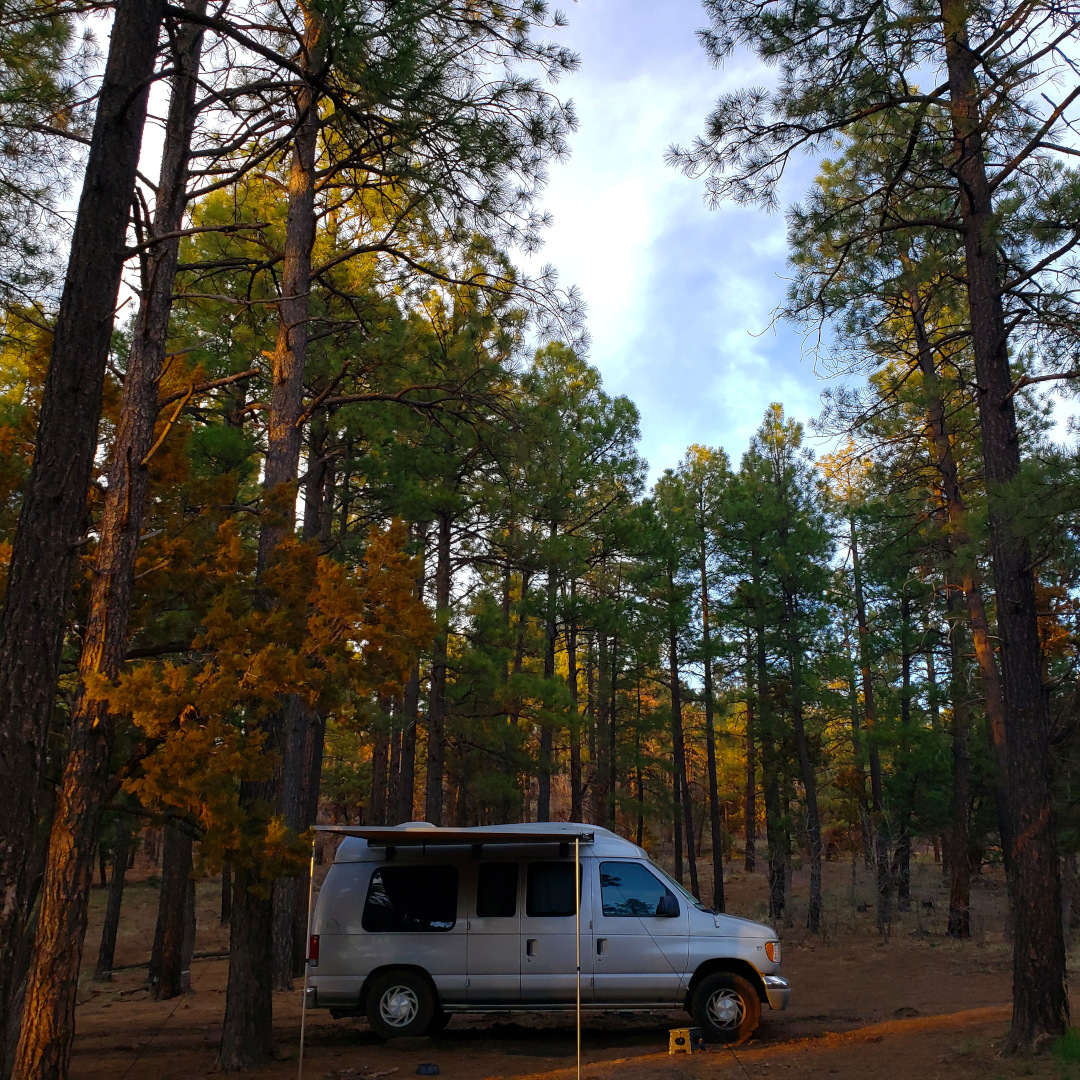

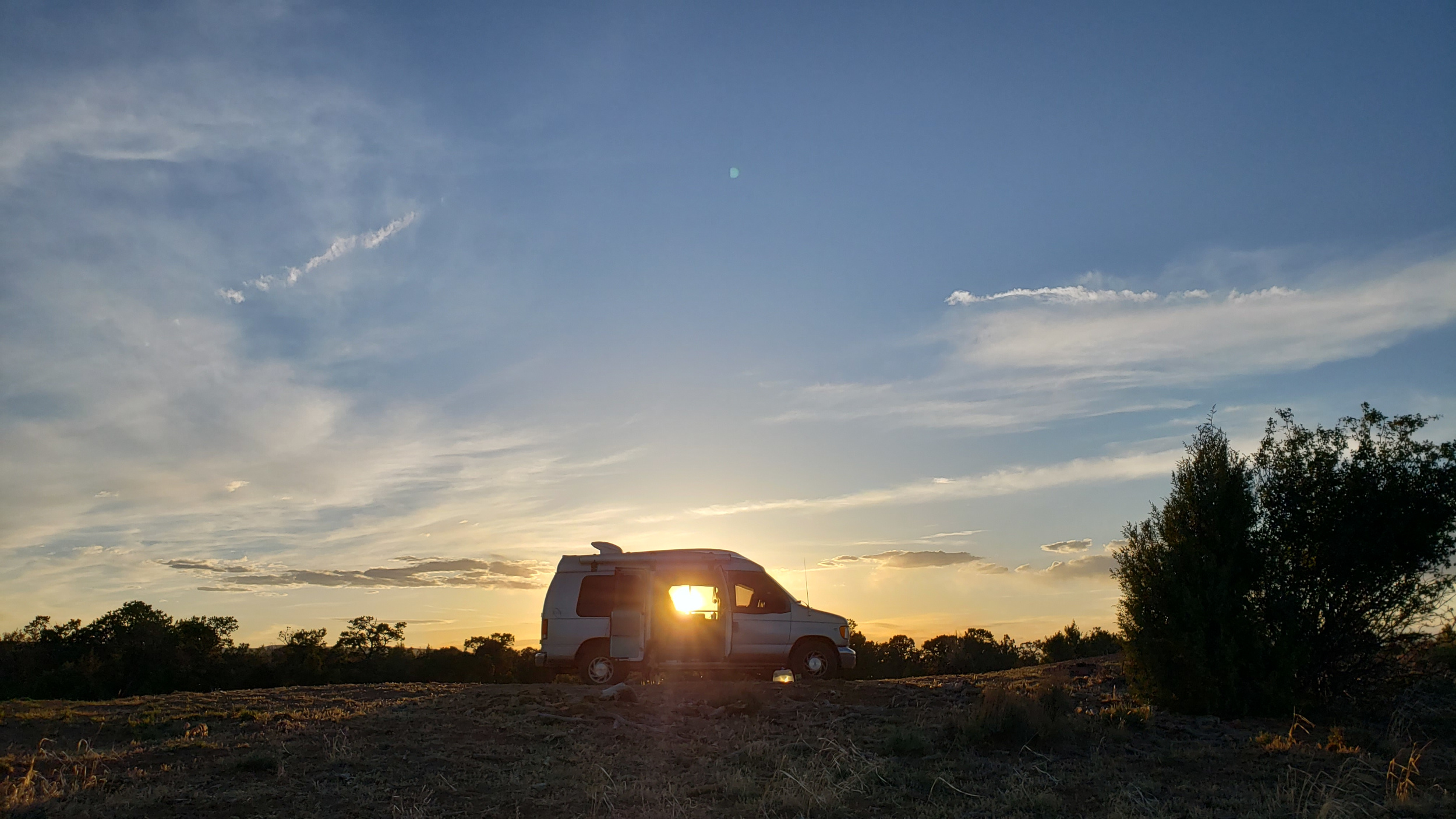
Thank you so much for sharing your experience with those of us only dreaming of your lifestyle! I’ve follow you since the beginning of this journey and will continue to follow. Be well!
Thank YOU so much, Mary, for following along and supporting me on this journey. I’m grateful to have you along for the ride! 🙂
Love all your beautiful pictures, it’s like taking a trip just looking at them. Beautiful! So proud of you.
Thank you so much, Christina! Your kind words mean so much. ?
Just sending love and belated birthday greetings.
Thank you, Jeanne!! Sending love right back to ya! ?